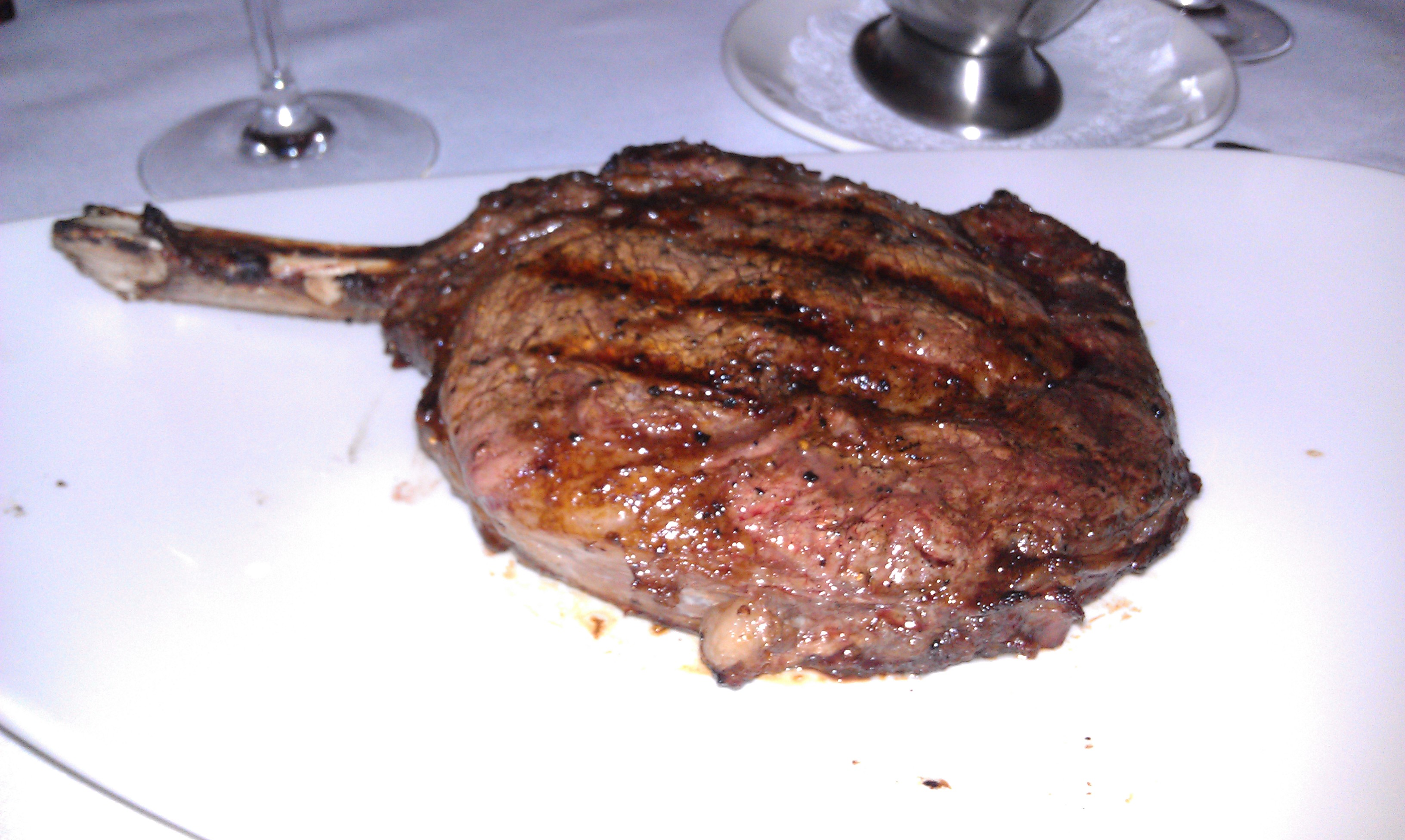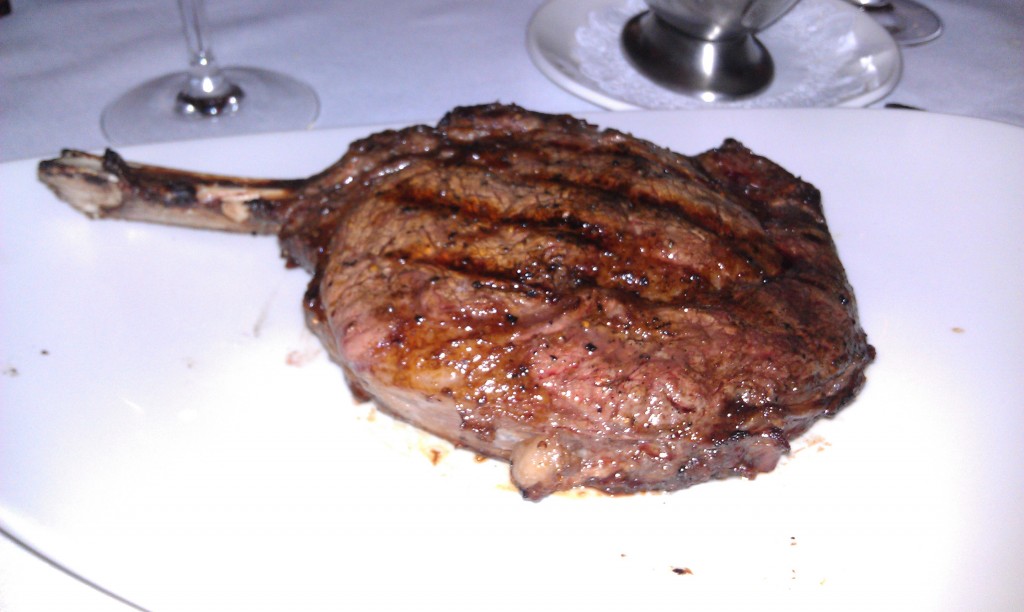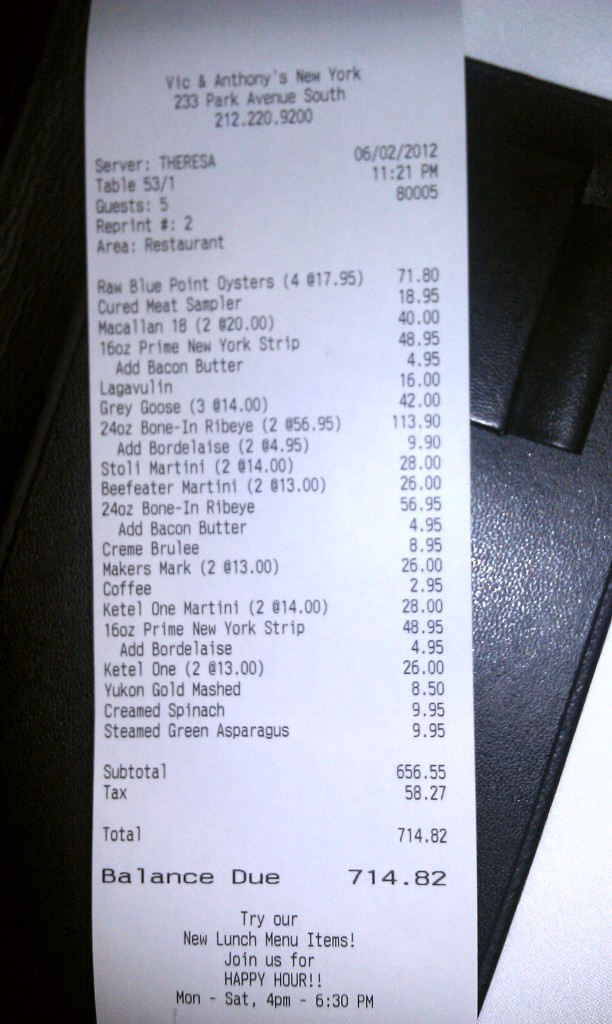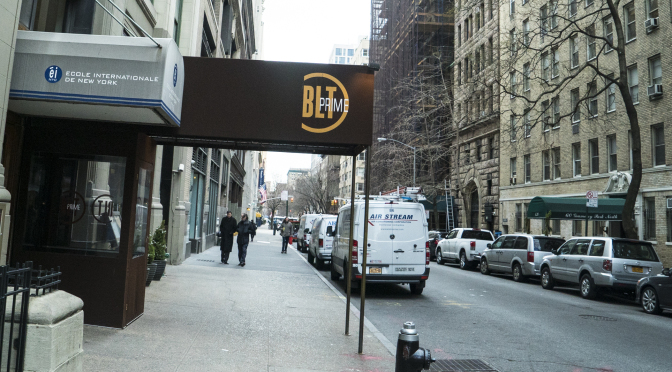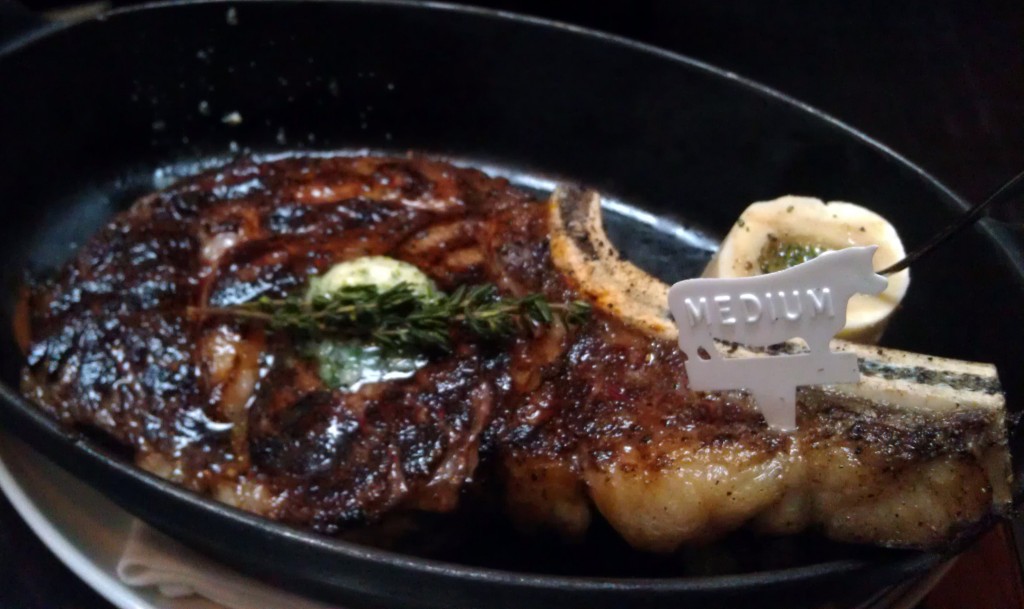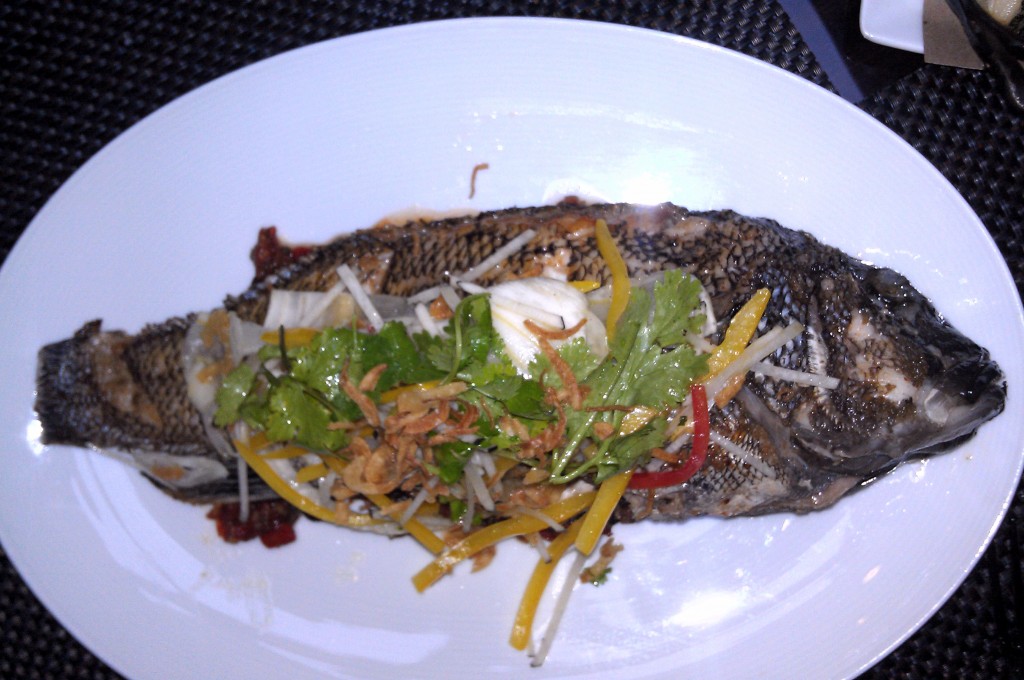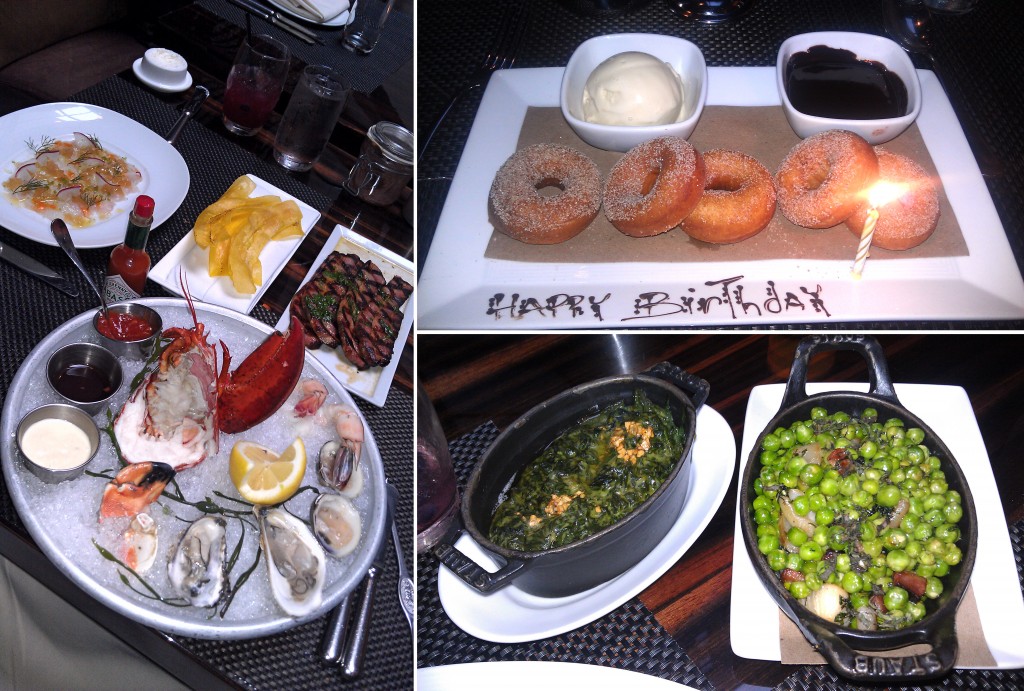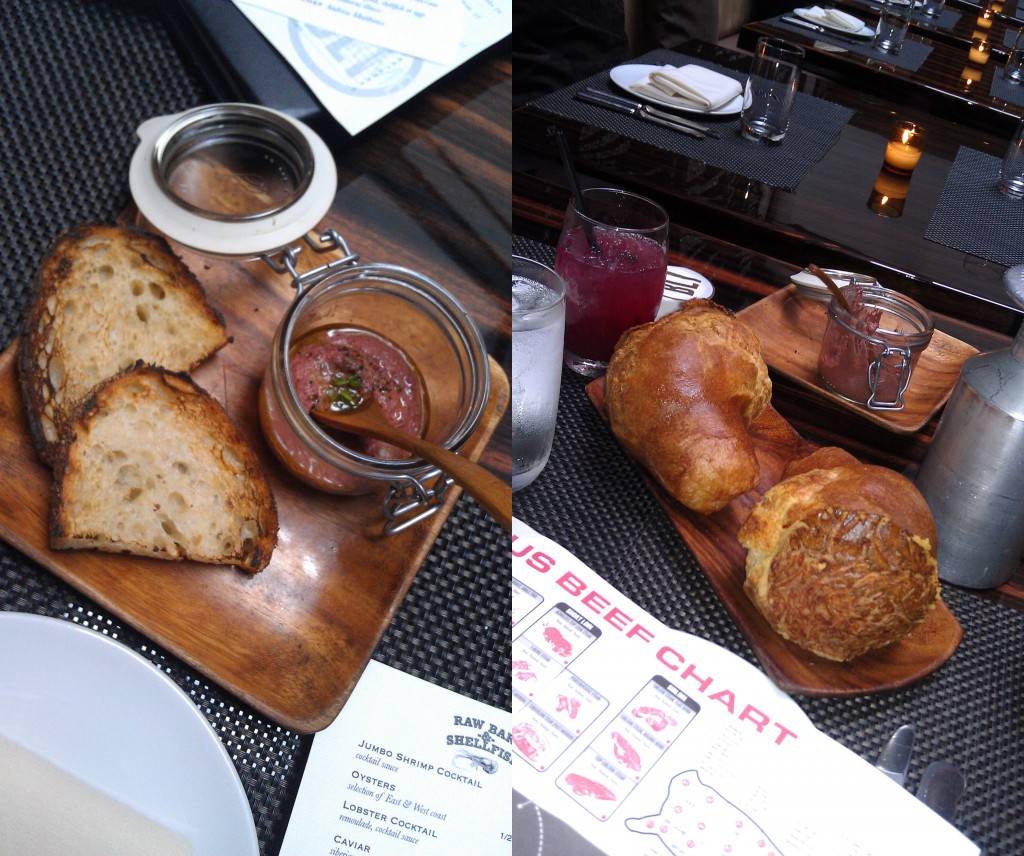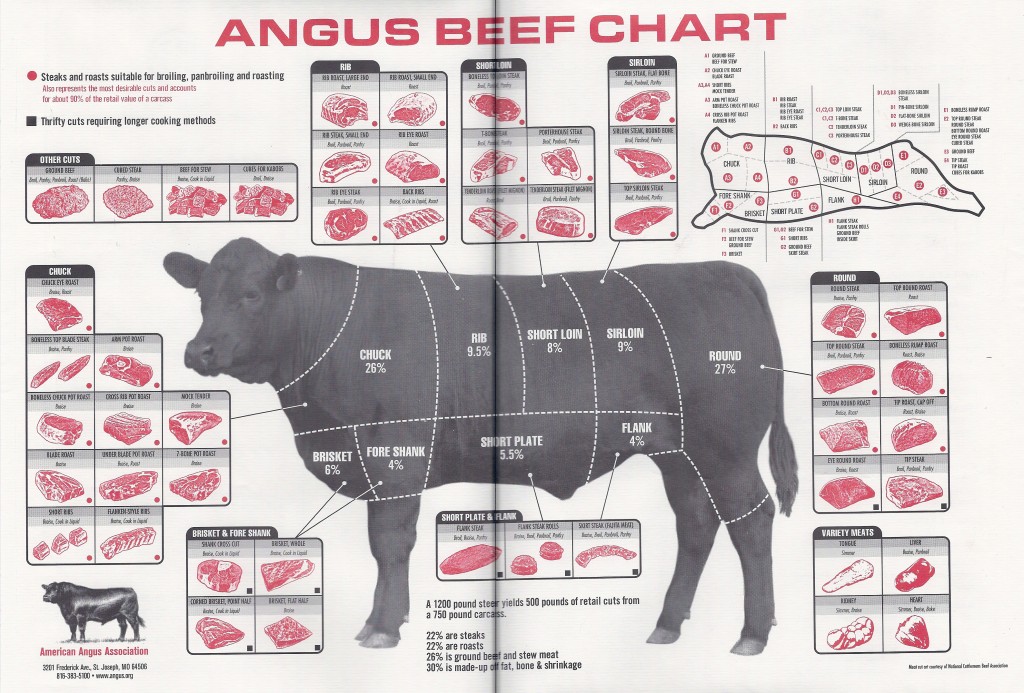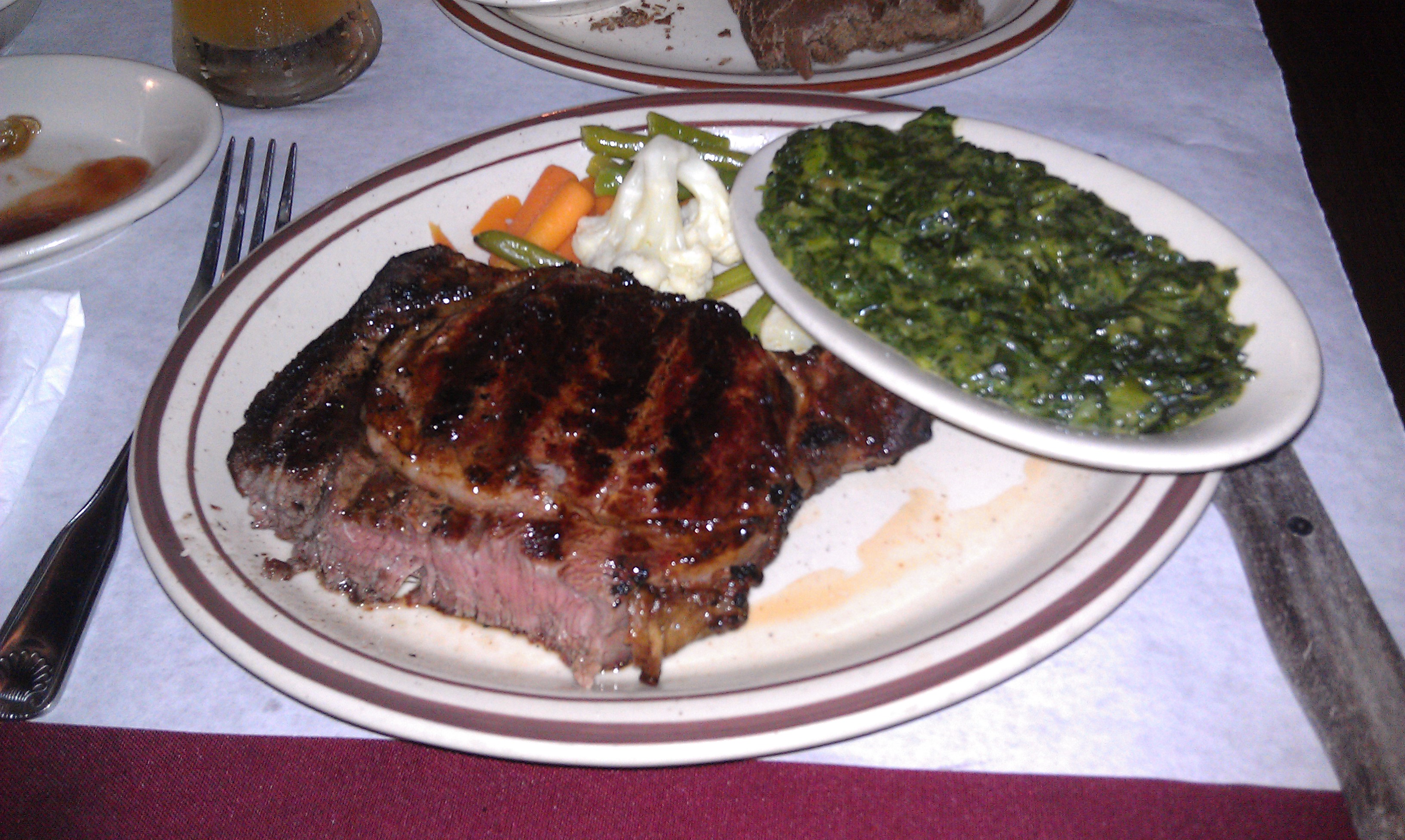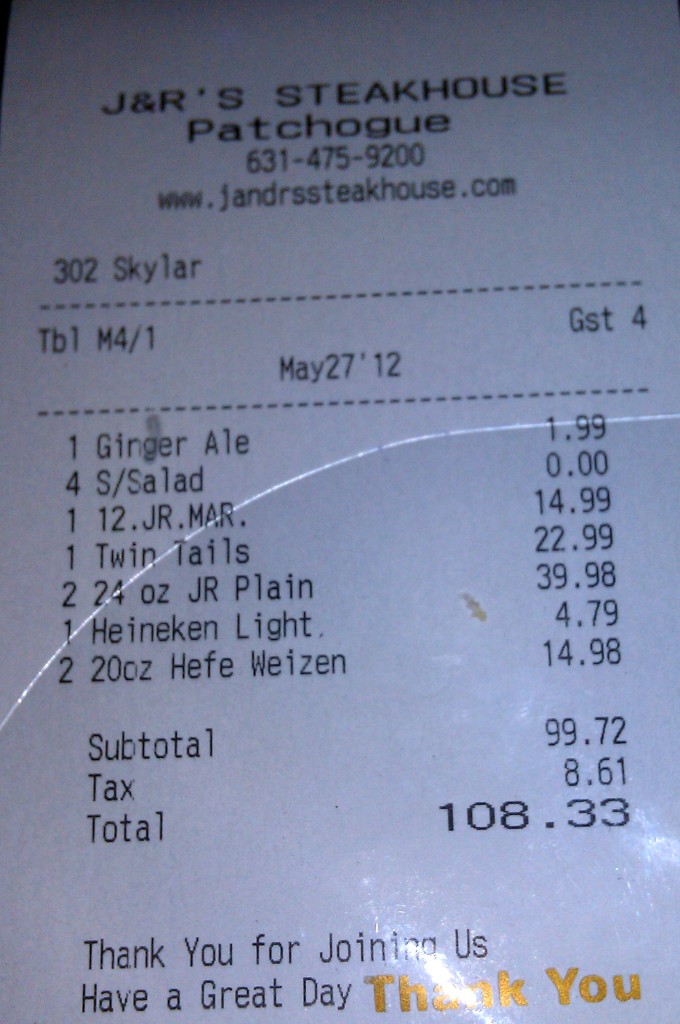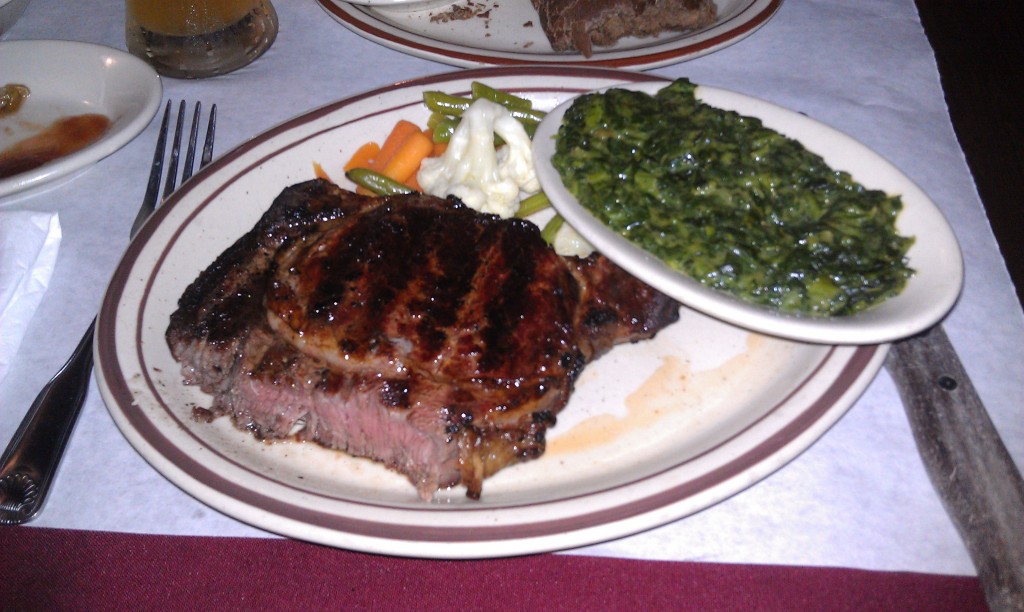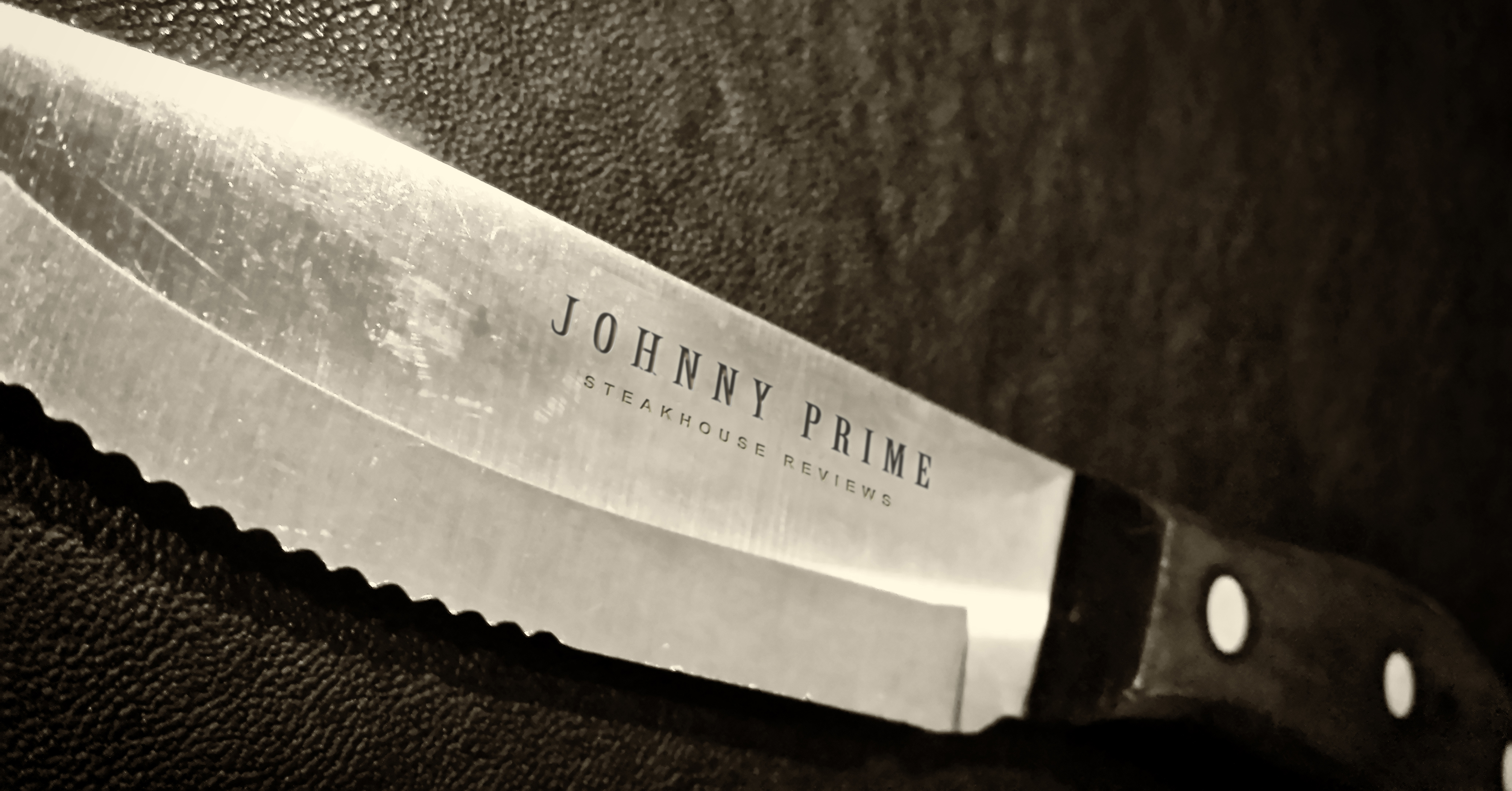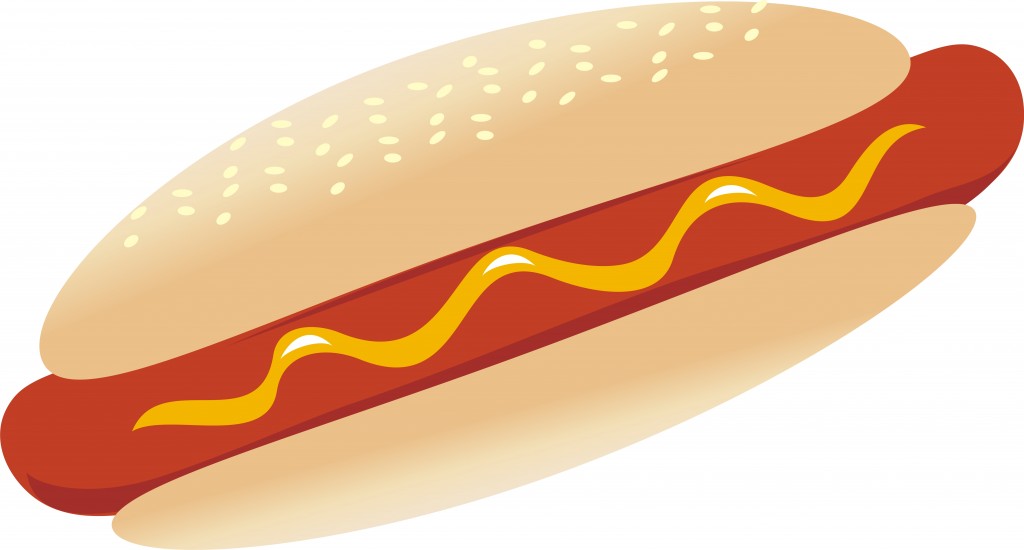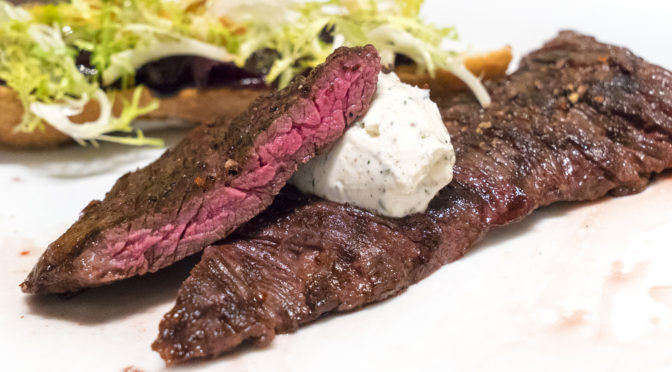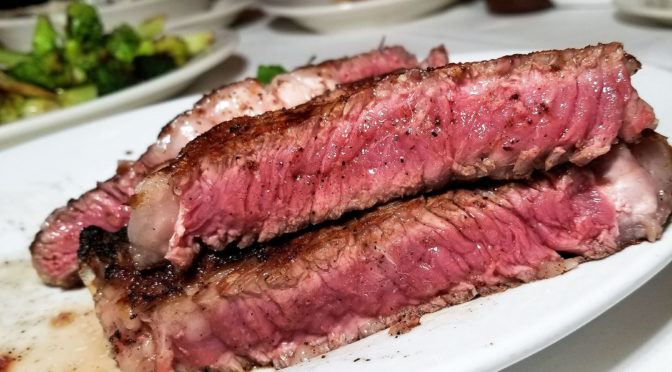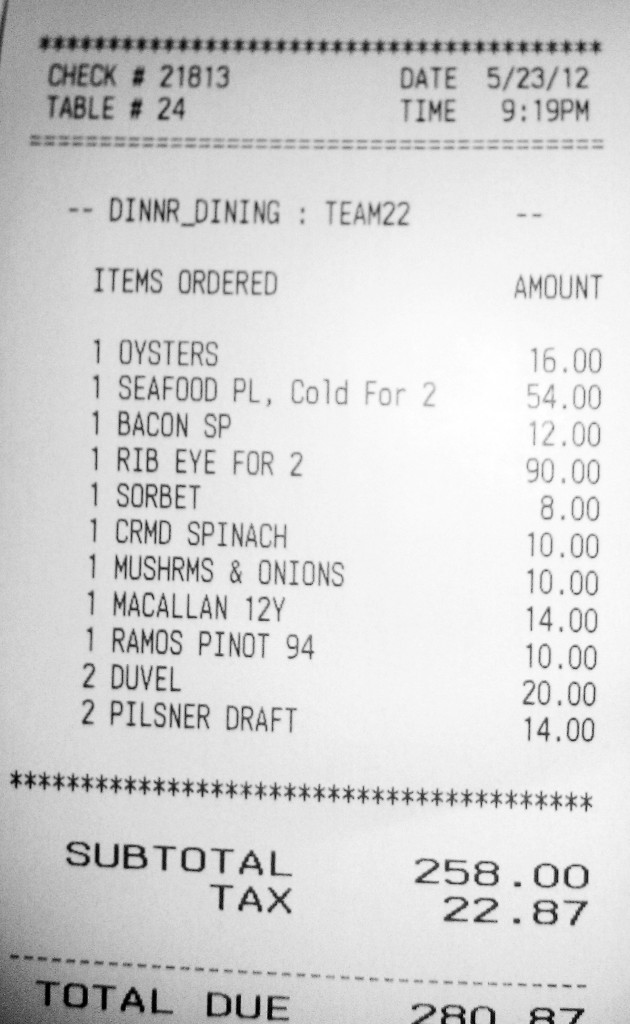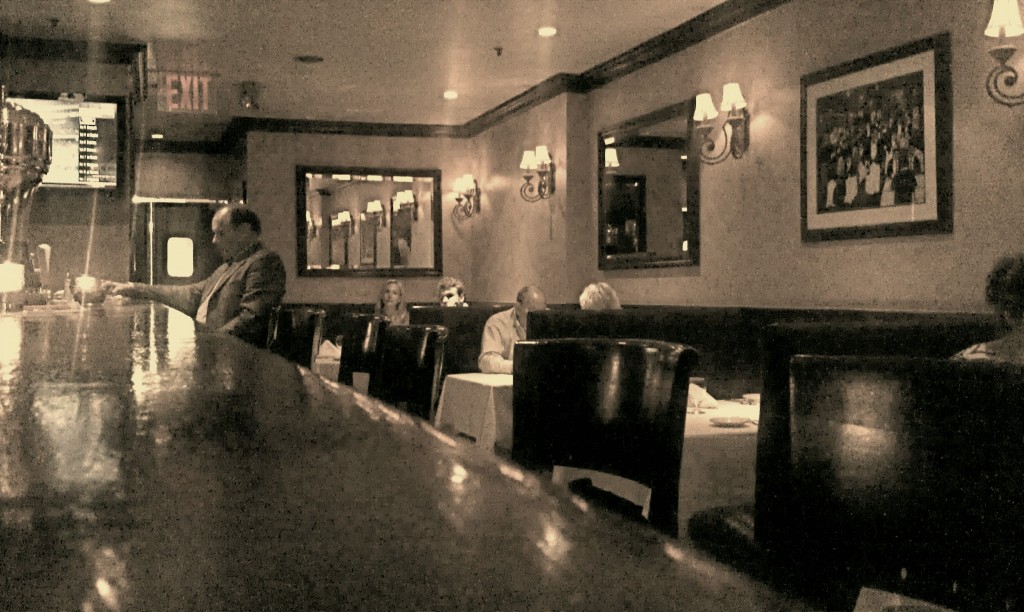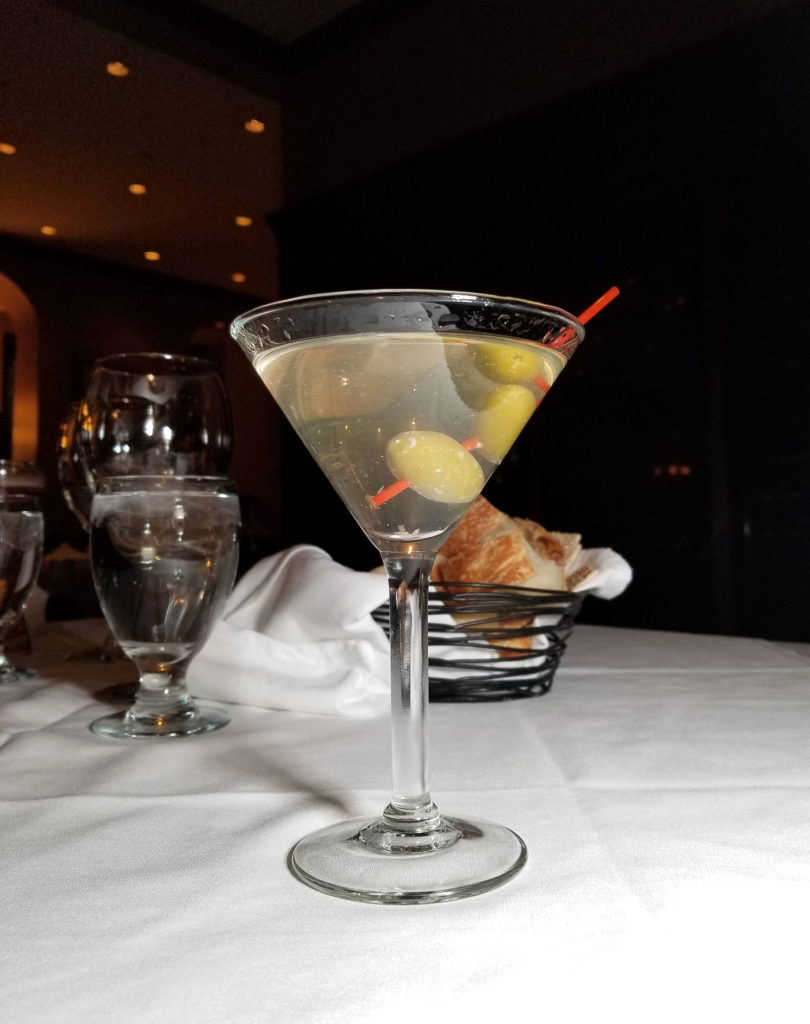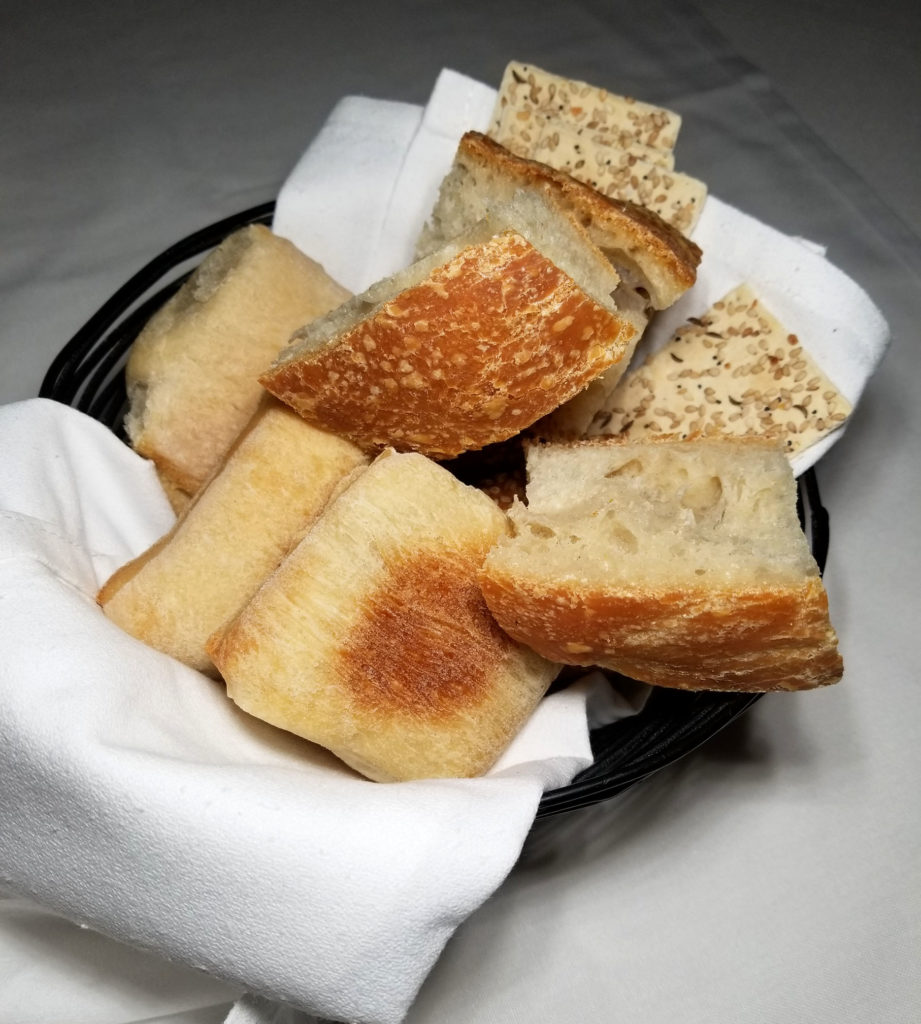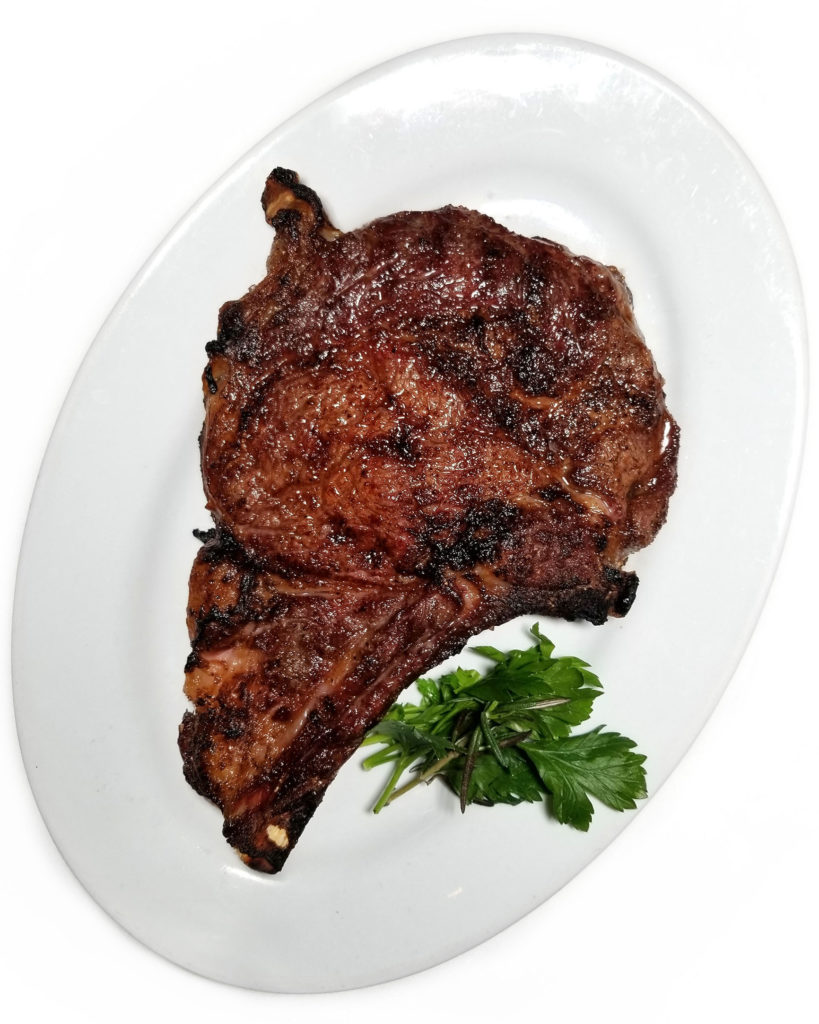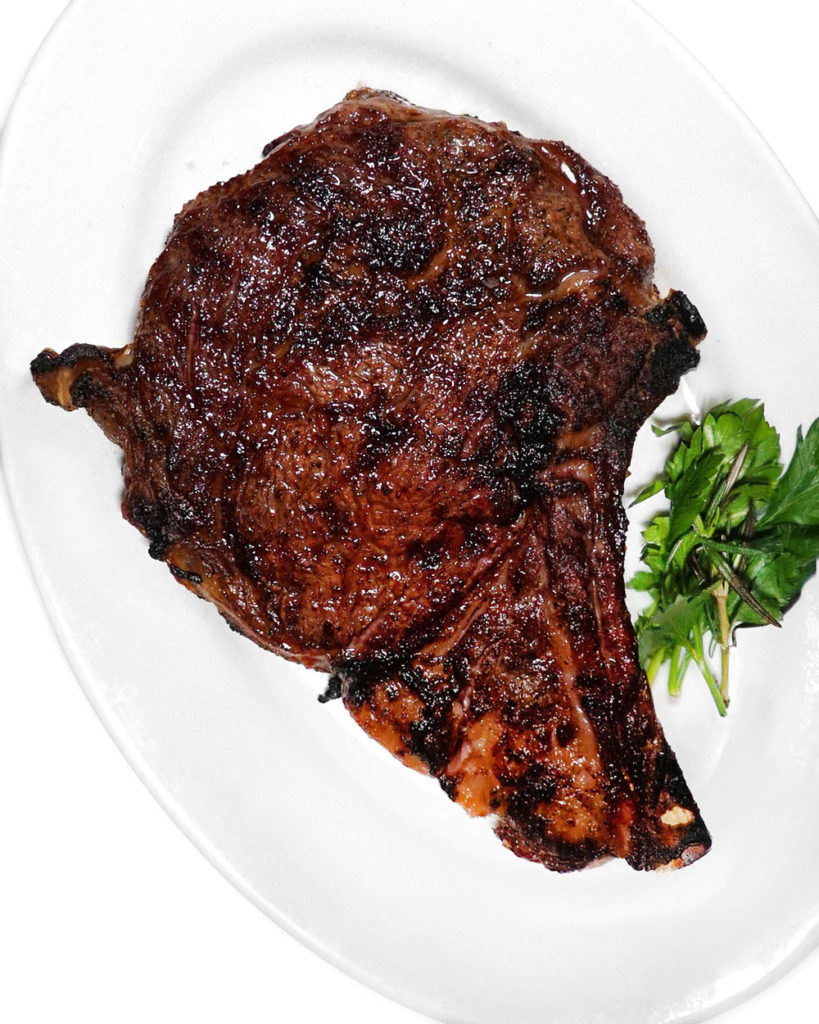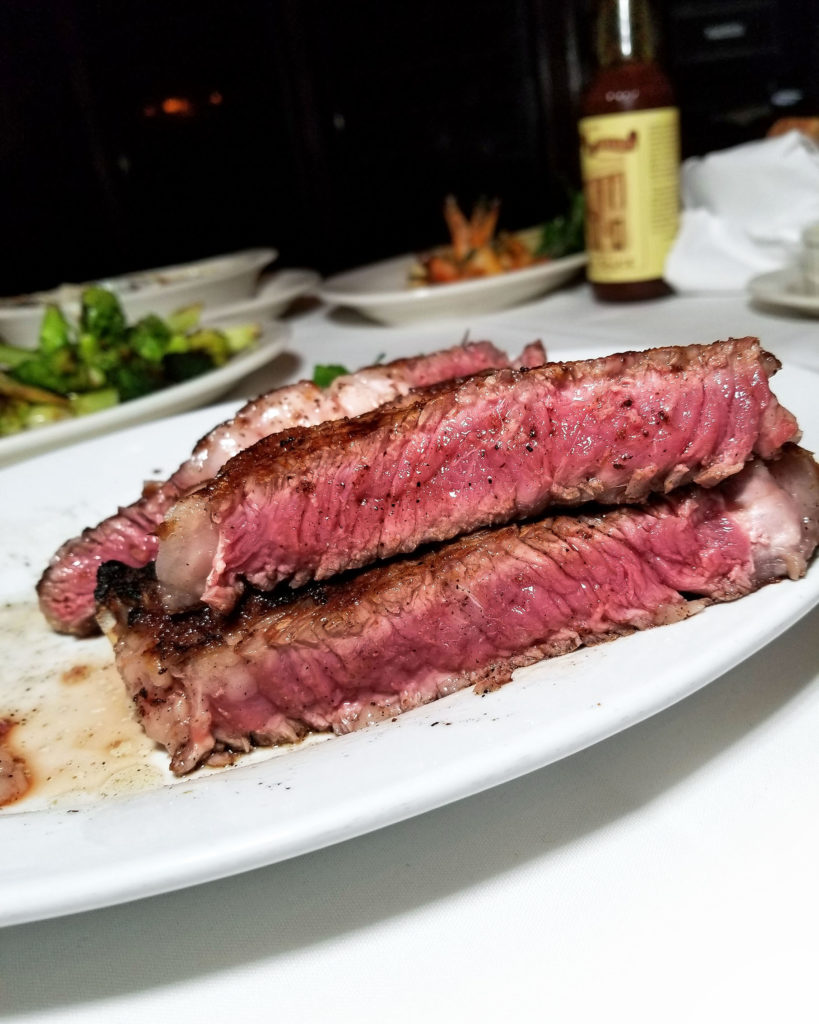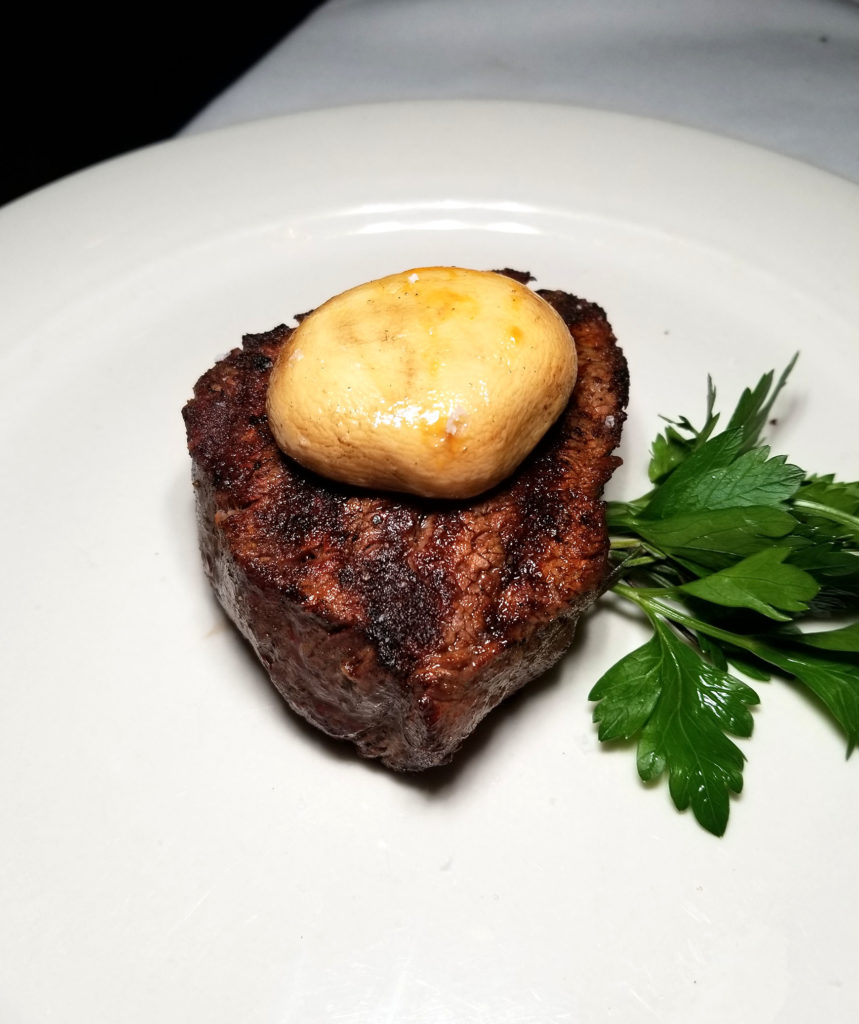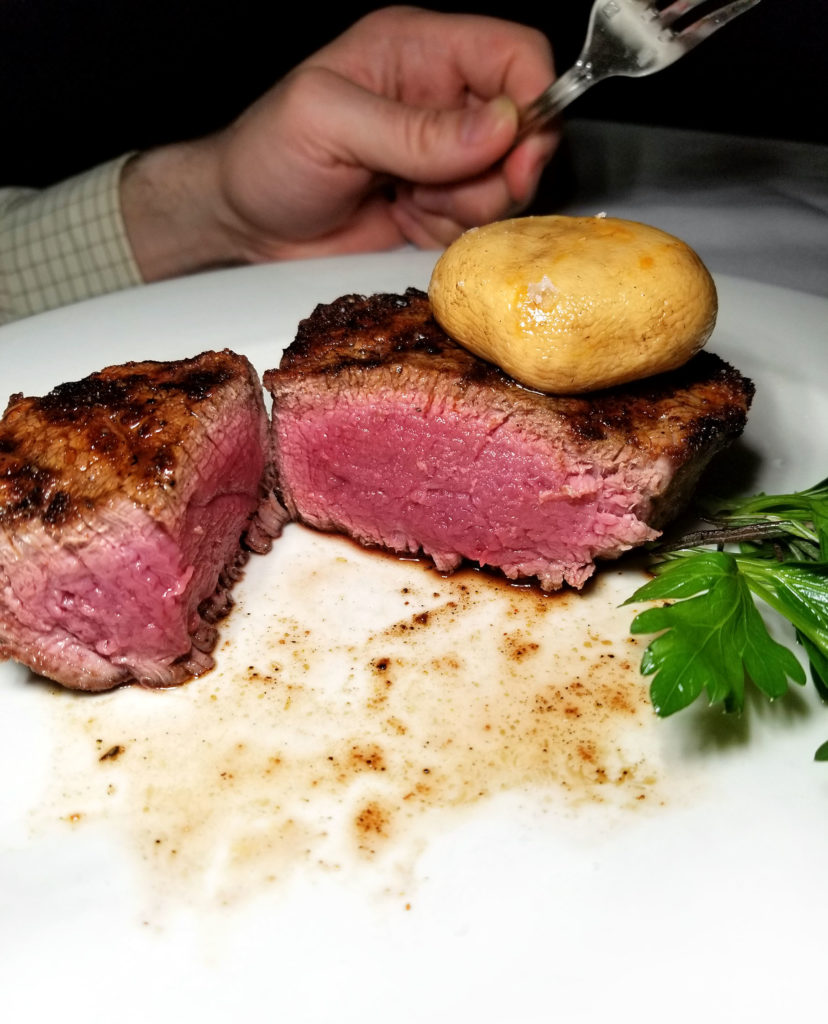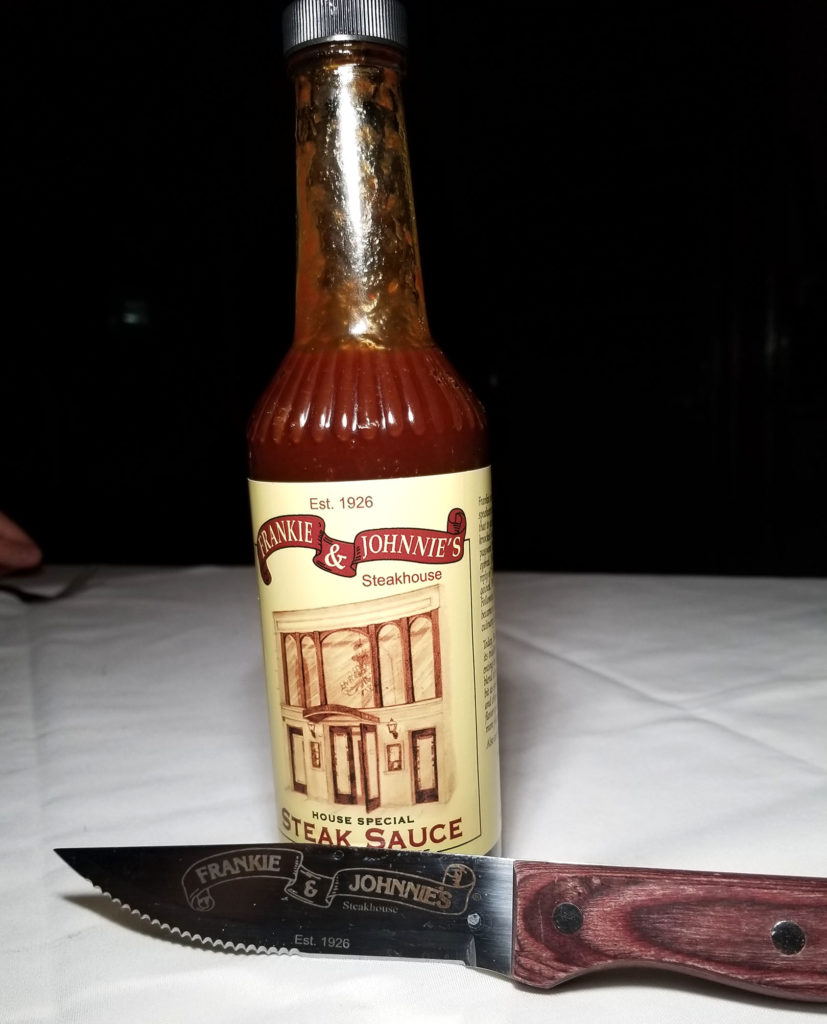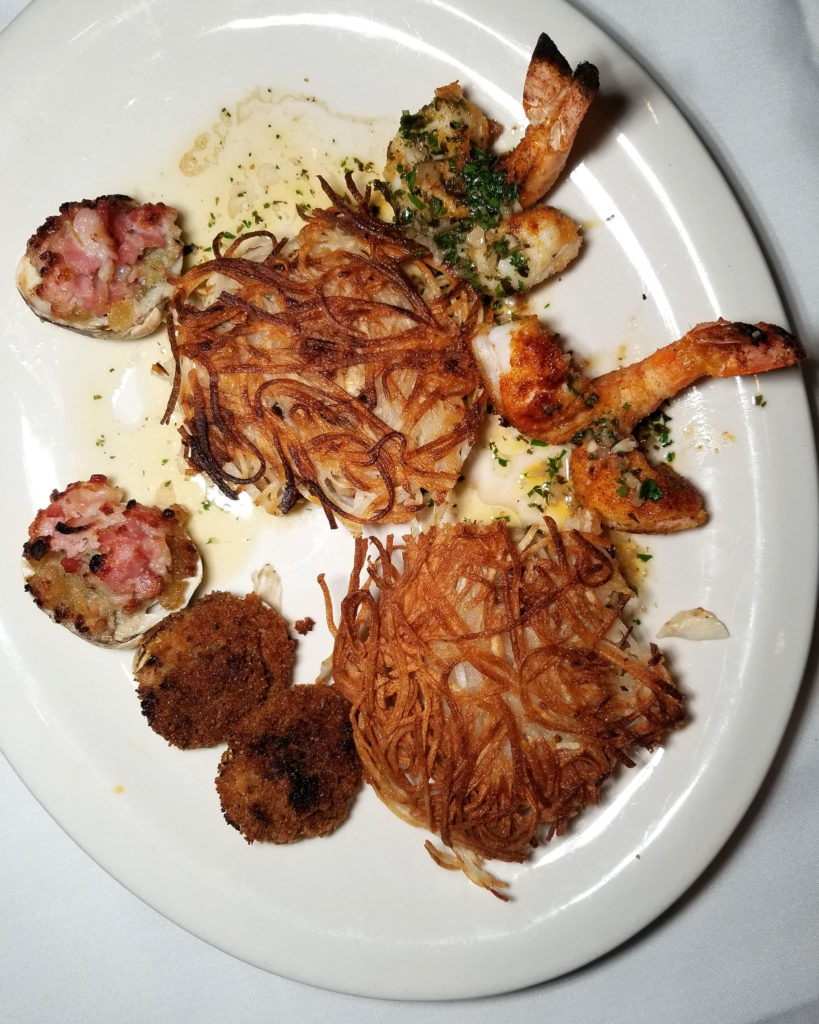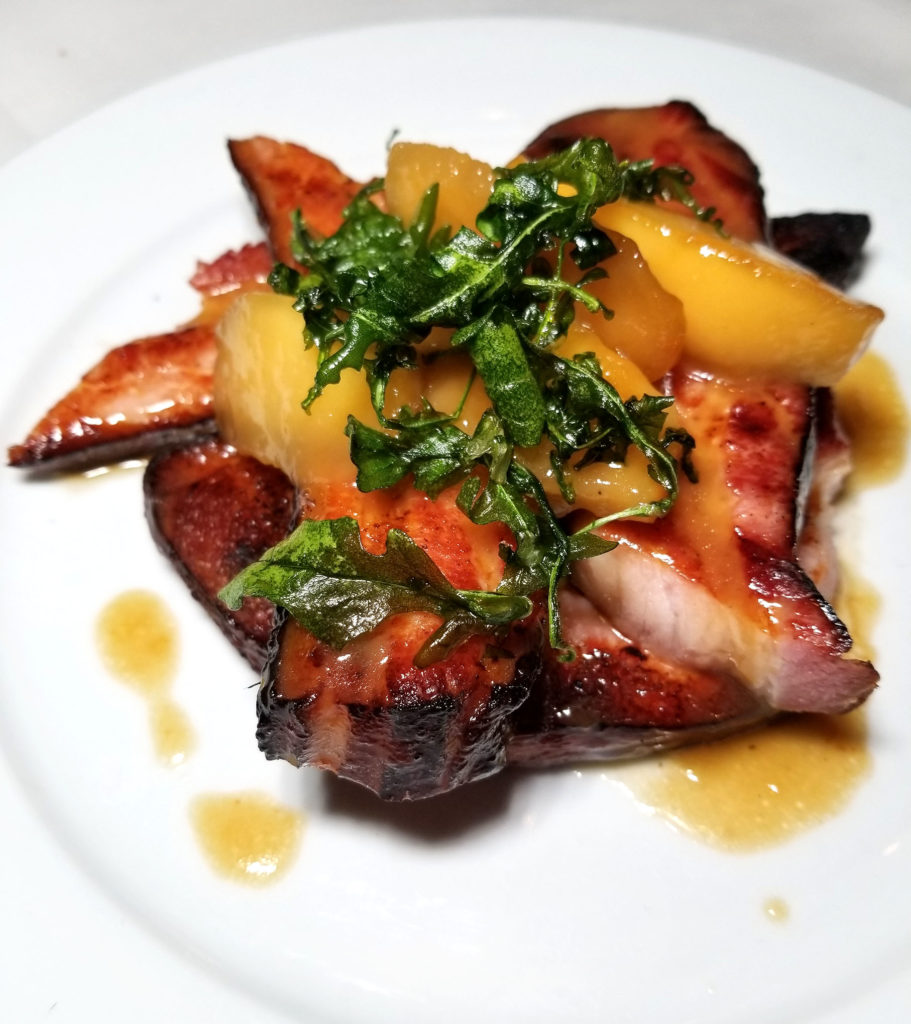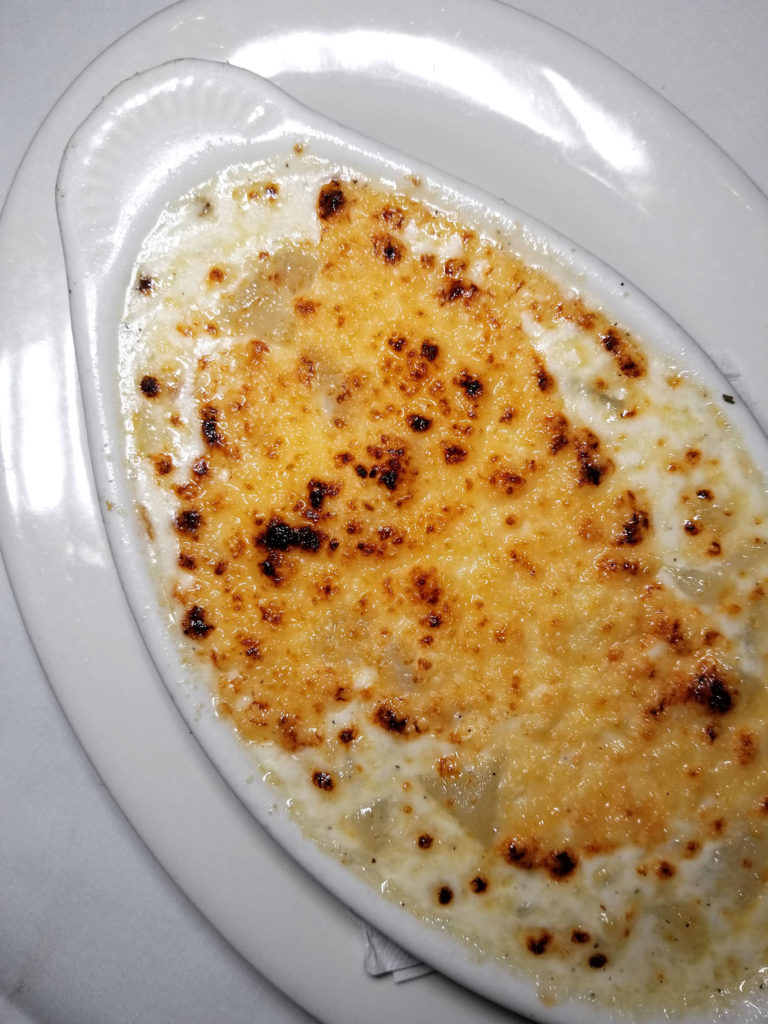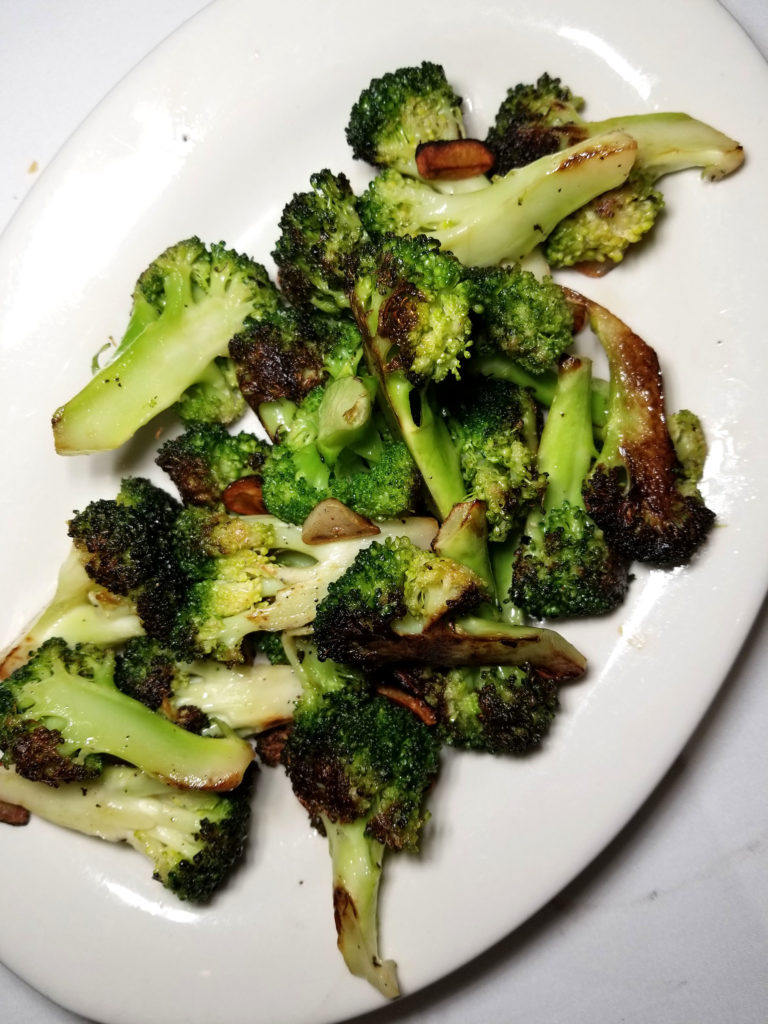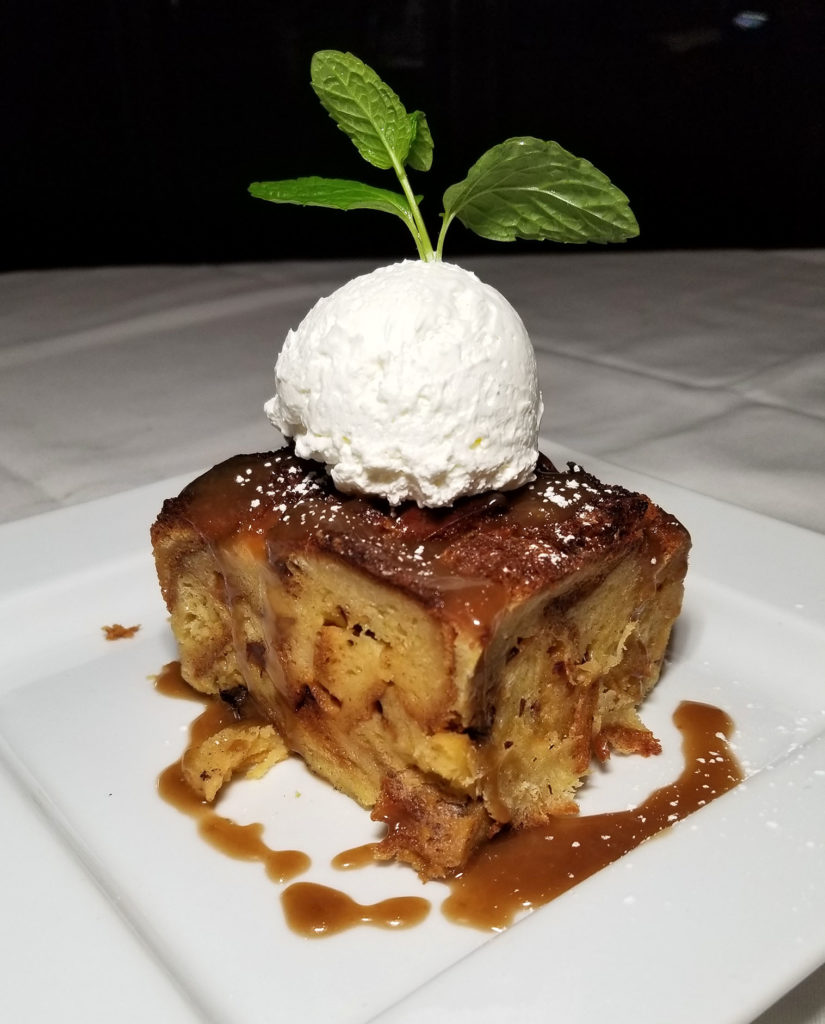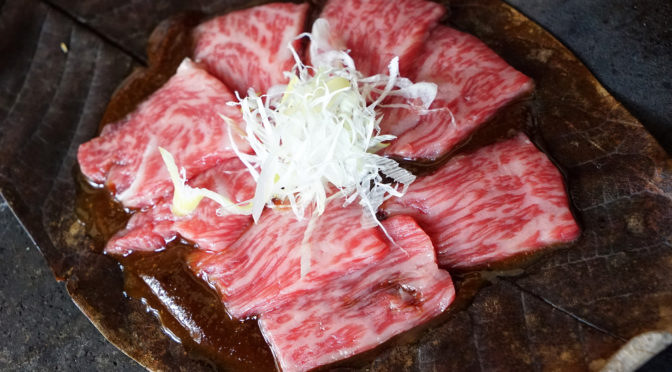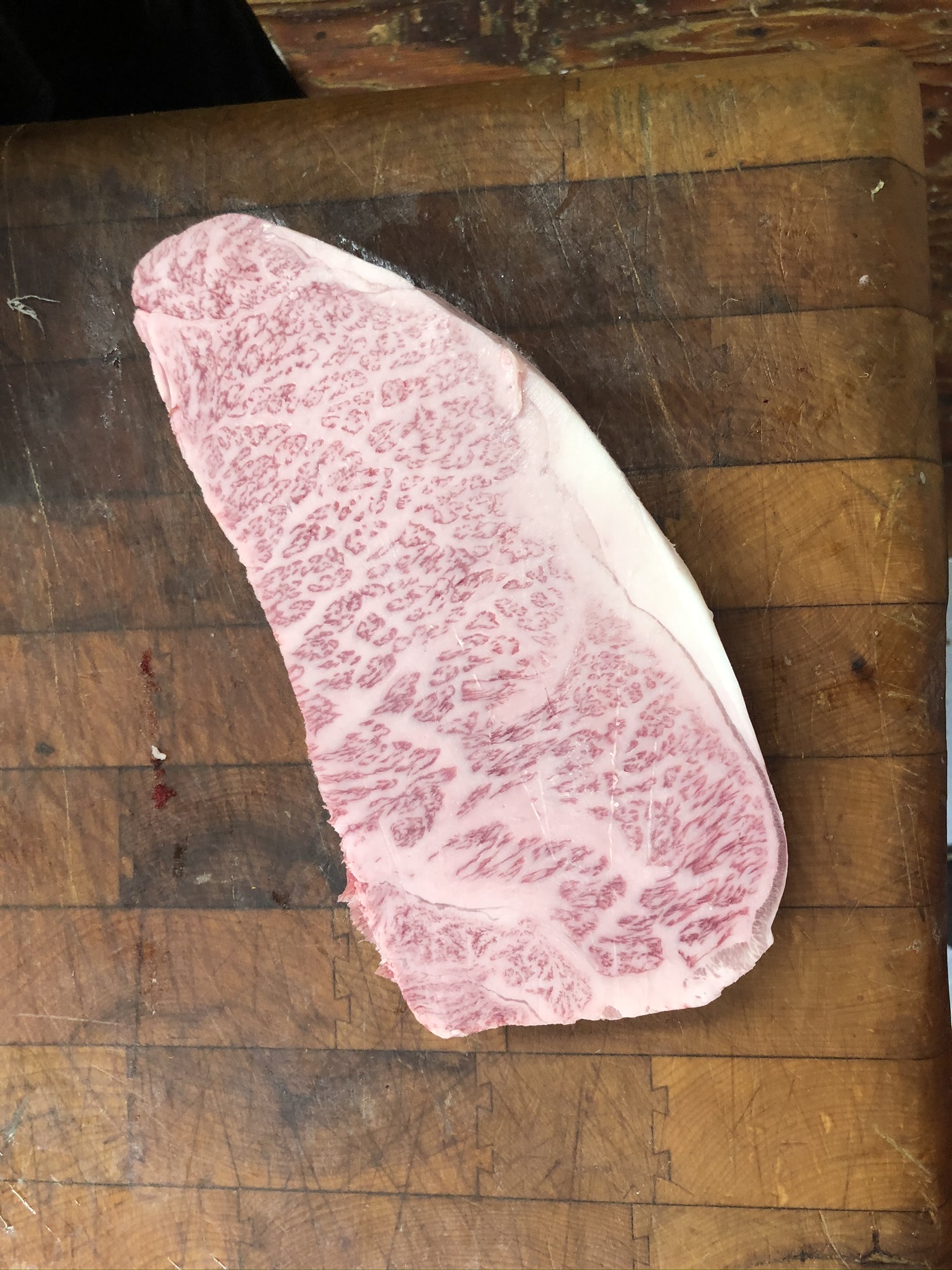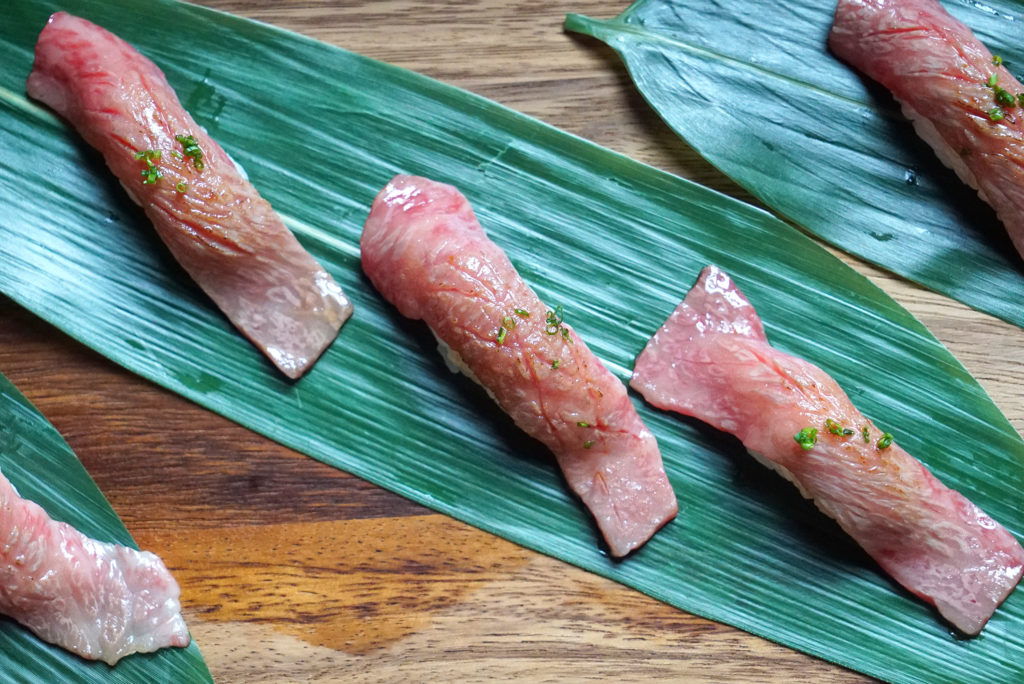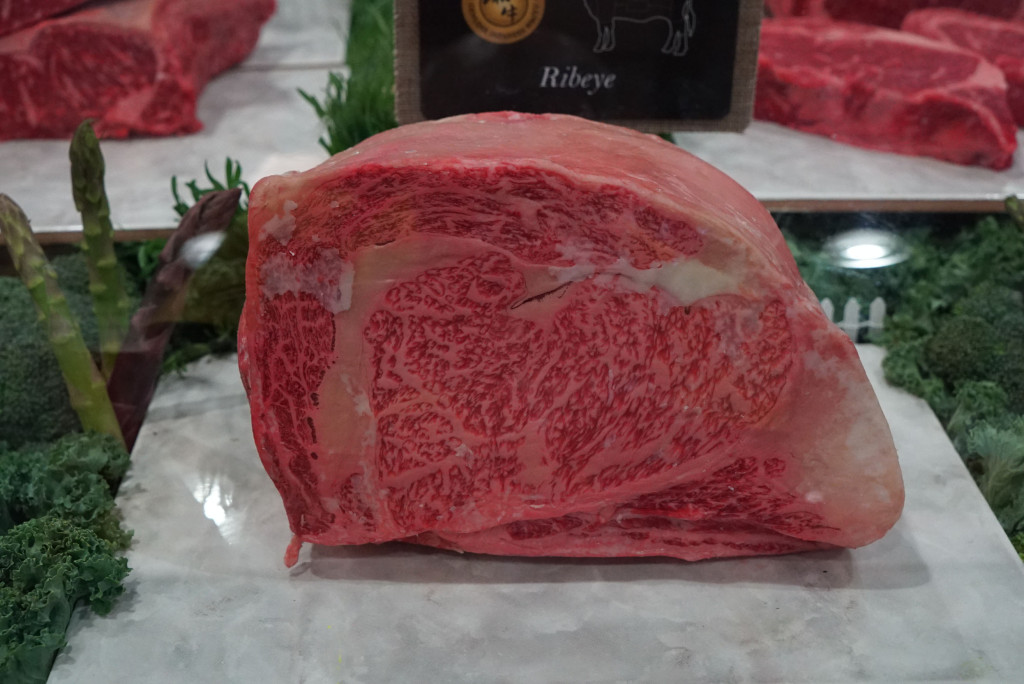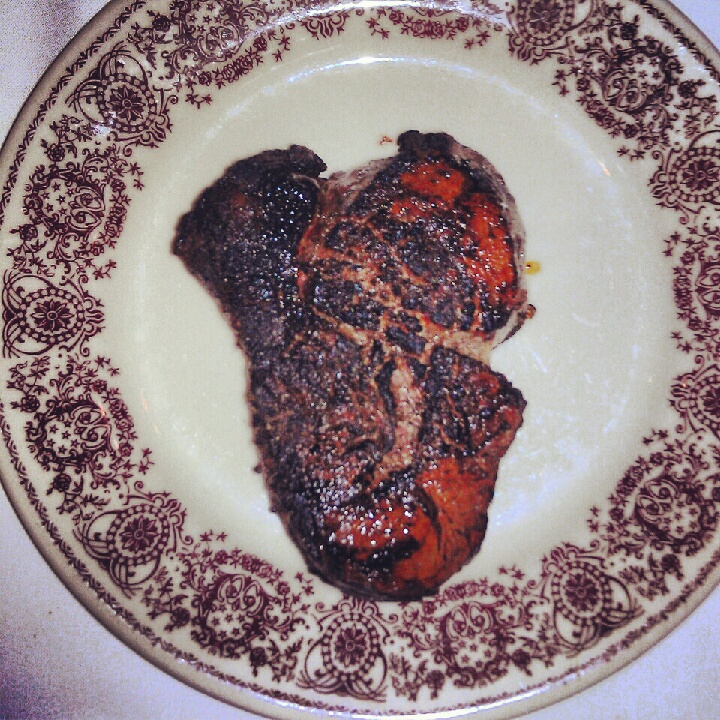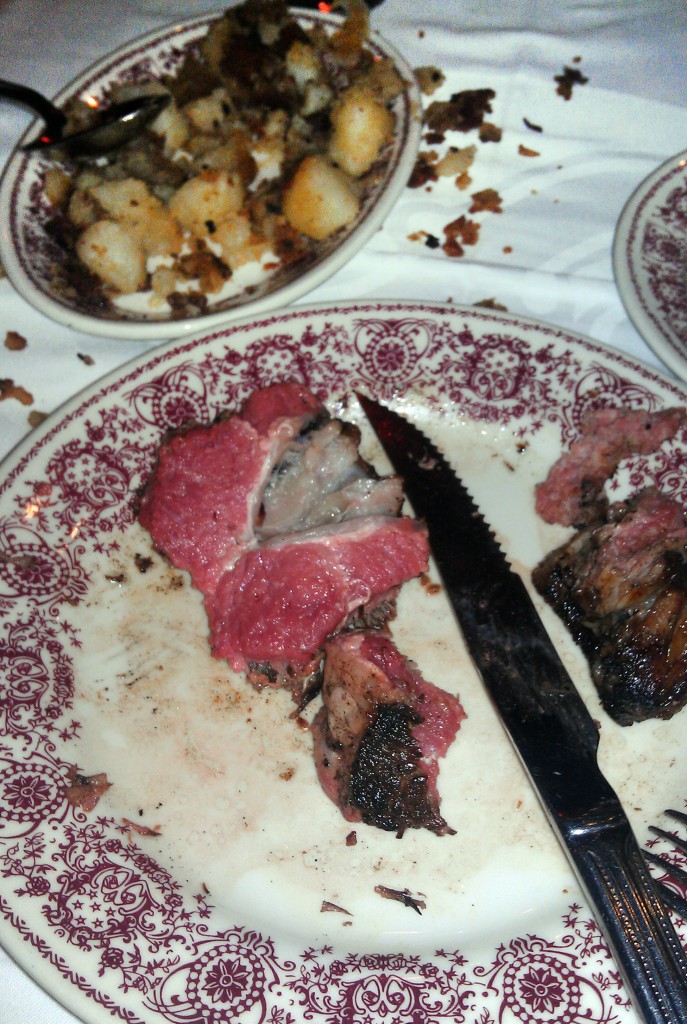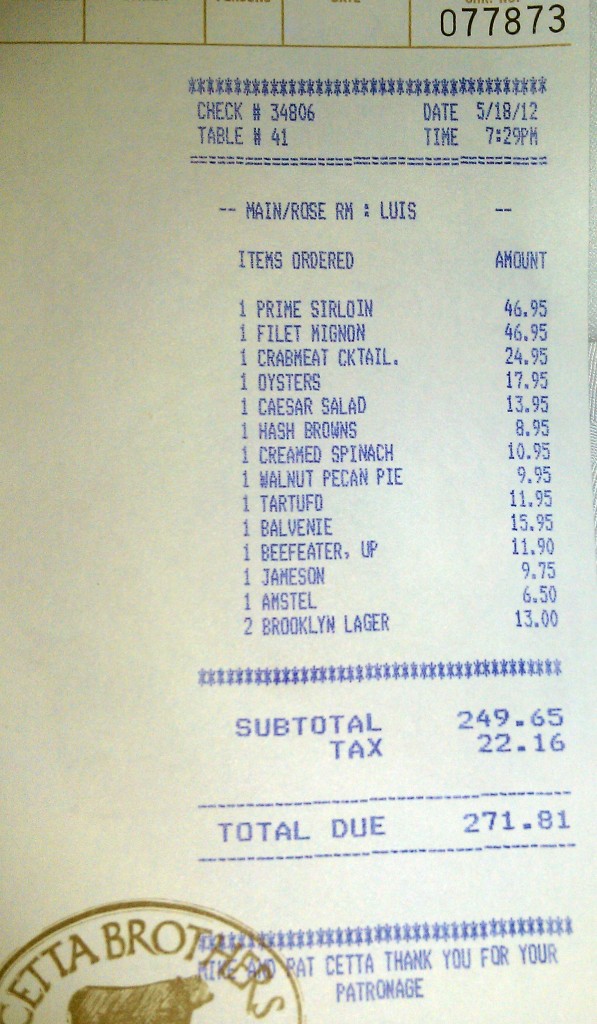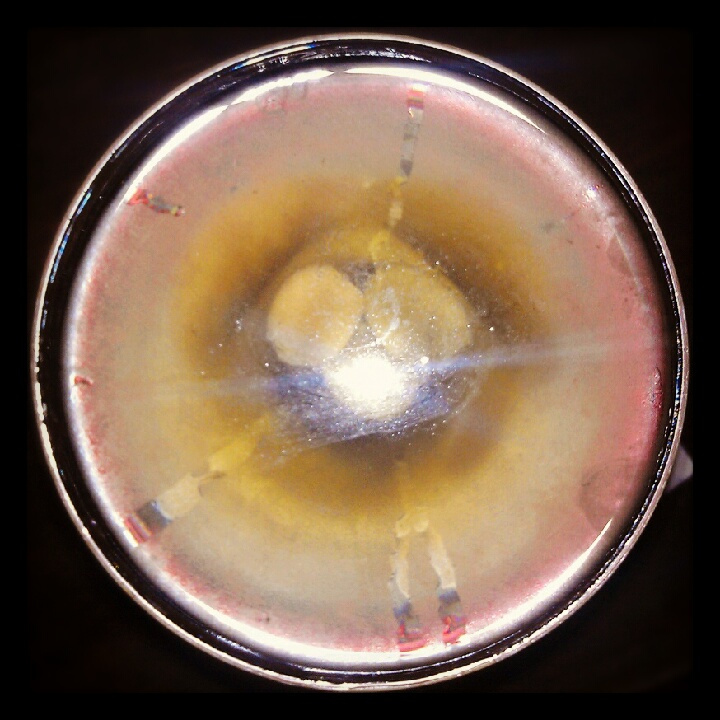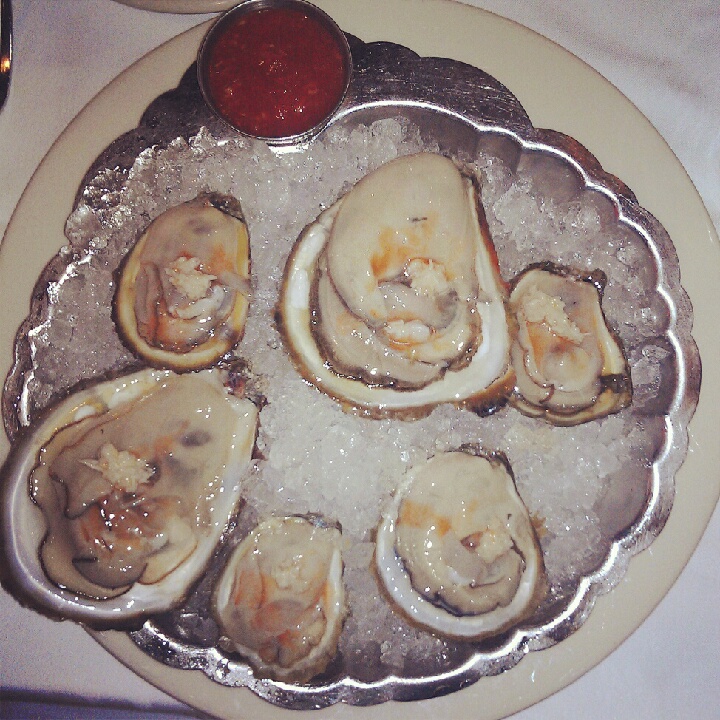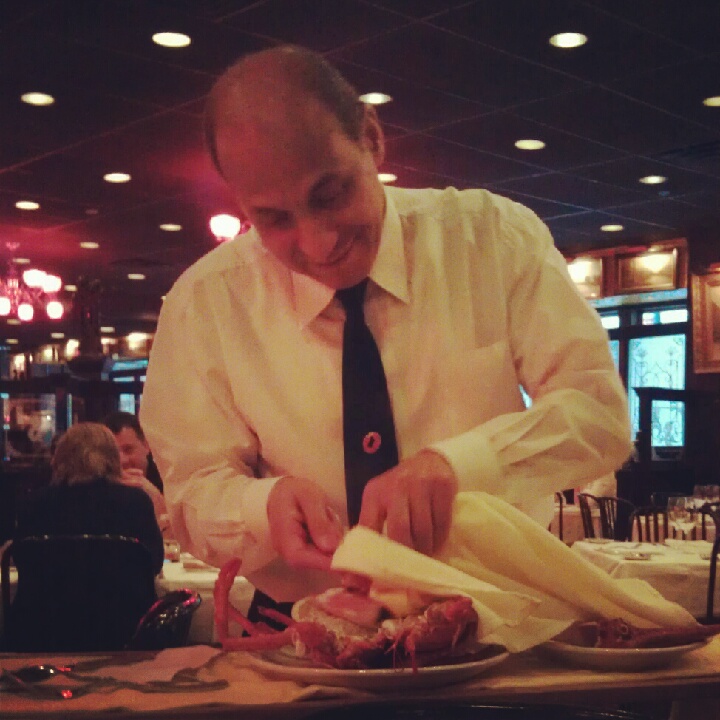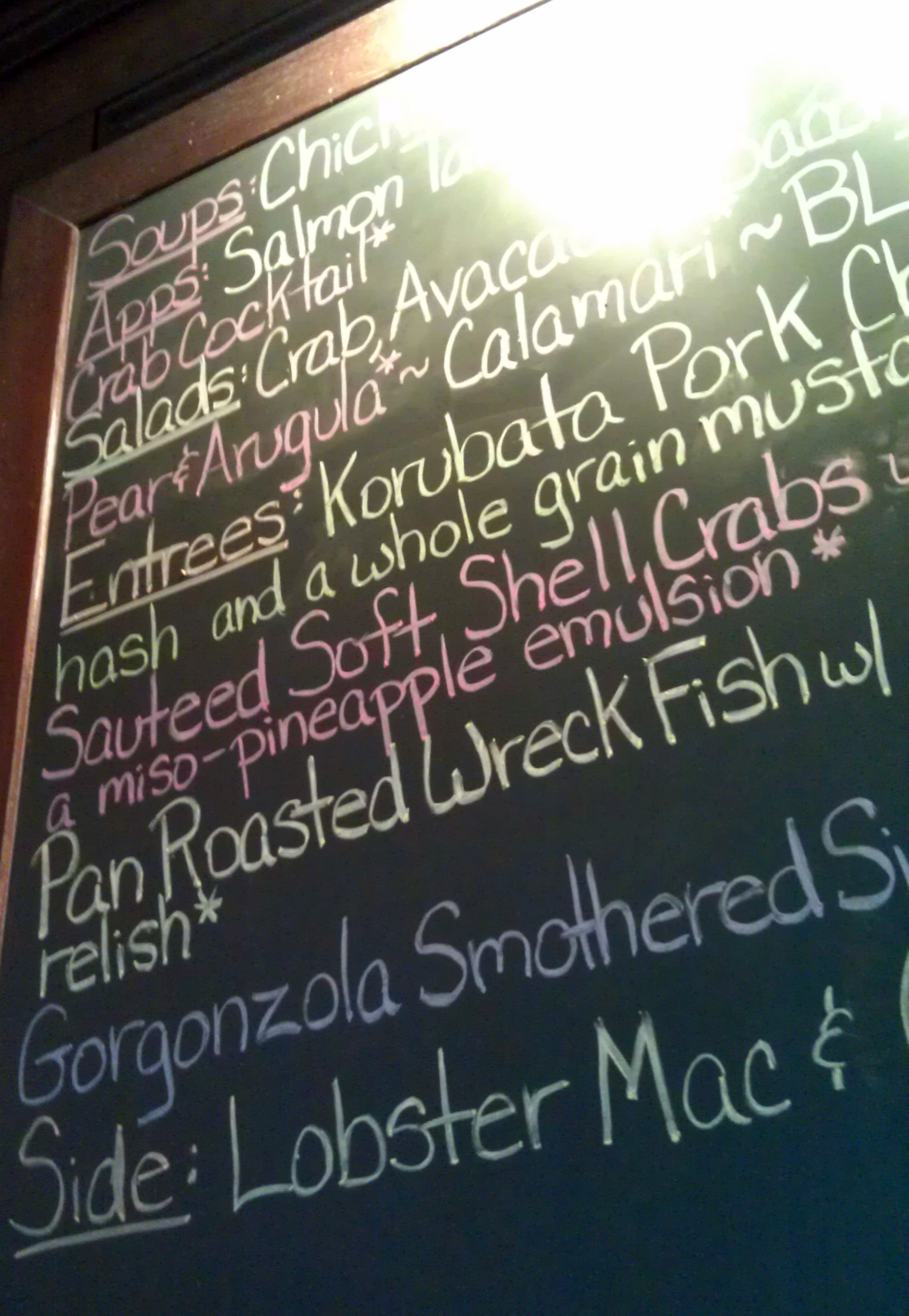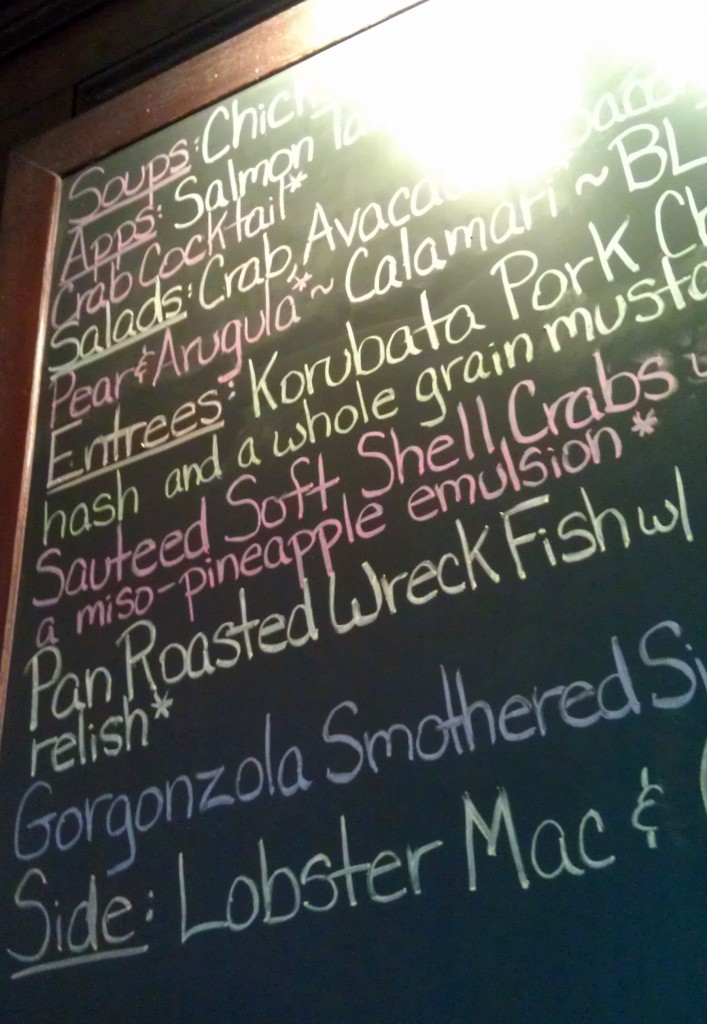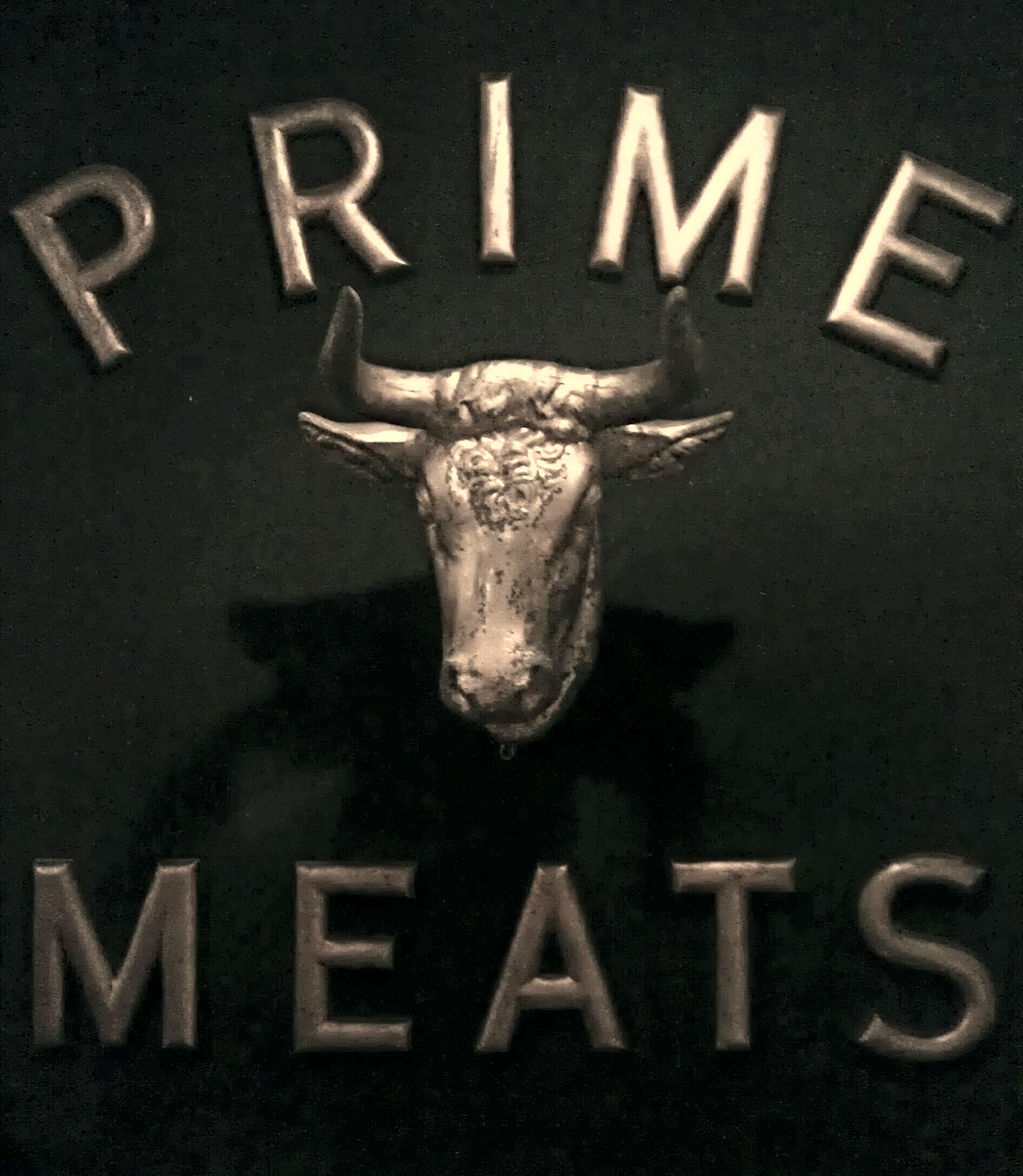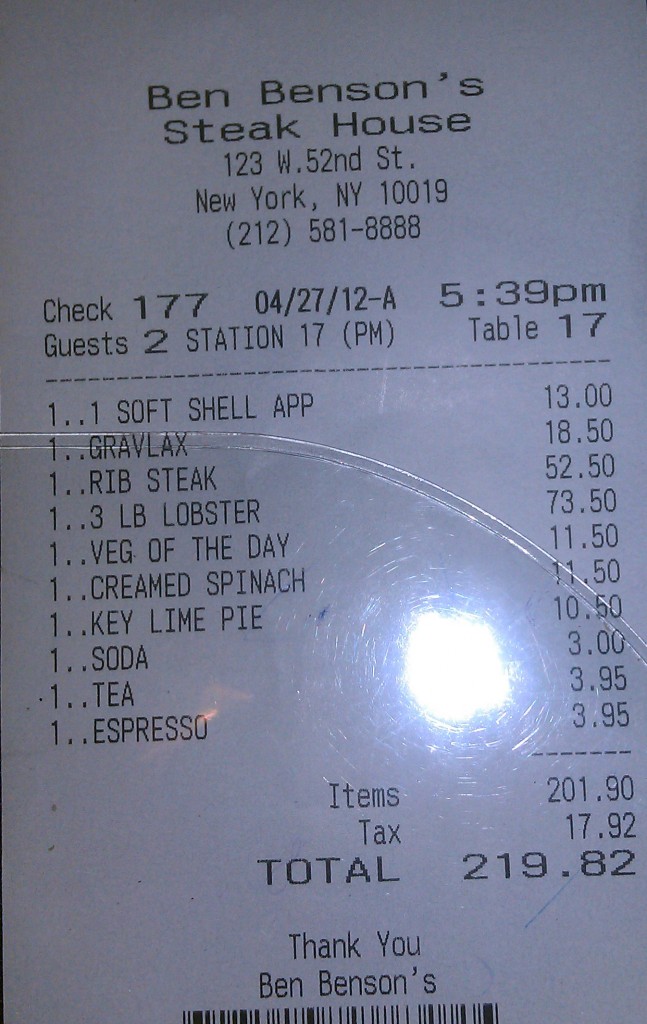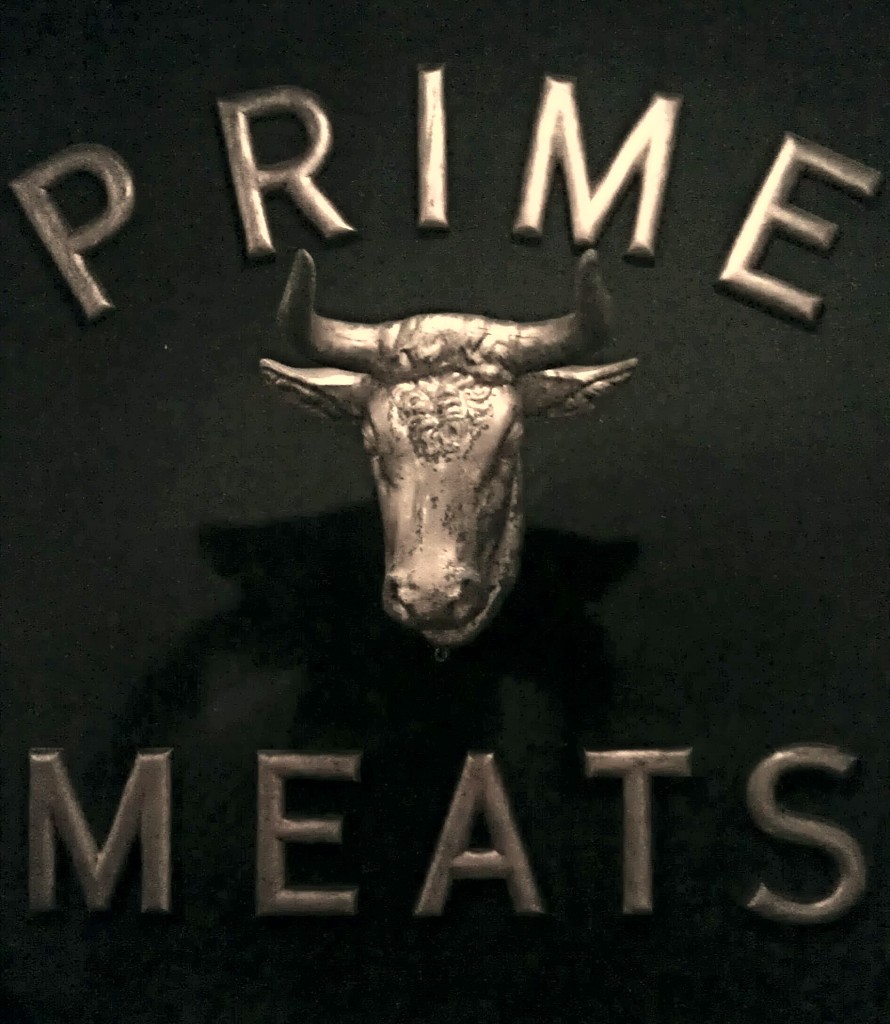Vic & Anthony’s overall score: 84
NOTE: this restaurant is now CLOSED.
This place is brand new in NY, taking over the location where Angelo & Maxies was located. There are three other locations around the states. I saw the website and it looked really impressive, so I was itching to get my mouth around some delicious steak and seafood there. A group of us decided to give it a try when a friend was back in town for a visit.
Flavor: 8
I had the bone-in ribeye. It was nicely cooked and even all the way through, but lacked a little bit of char and crisped edges. Otherwise it was well rested, juicy, and seasoned appropriately. The others leveled similar criticism about the meat, but I must say despite that mishap my steak was really fucking tasty, so I am only deducting two points. One of my buddies almost sprouted labia and ordered lamb chops, but he was quickly set in line and went with the ribeye as well. I wonder if he would have been happier with the lamb. You can see in the pic below that the meat actually looks wet and not crusted.
Choice of Cuts & Quality Available: 9
Vic and Anthony’s covers the basics in top fashion. They have two ribeyes; a boneless, and a bone-in. They have two sizes of filet, a boneless strip, and porterhouse for two. They also list “domestic Kobe beef” on the menu, a contradiction in terms (see earlier post on Kobe and Wagyu items in this country). Not a bad beef selection, though they would benefit from having one or two other cuts specially prepared, like a flank or skirt. They have toppings that you can order with your steak, like blue cheese bacon butter, or bone marrow bordelaise, but I am somewhat of a purist. I tried the blue cheese bacon butter on the side and it was actually really good, as was the bordelaise. Maybe they would have been good for fries, but I don’t like putting sauces on my meat as a general matter. As I’ve said in the past: this review blog isn’t about the dress; its about the meat underneath, so who cares about the fuckin’ sauce.
Portion Size & Plating: 8
The sizes are good here. They have 8oz and 12oz filets, 16oz strip, and 16oz and 22oz ribeyes. No size was given to the porterhouse, but they are usually around 36oz-40oz (shared between two people). As for the other items, the portion size was small for the cured meats platter, good for the creamed spinach, asparagus and mashed potatoes, and good for the creme brulee.
4) Price: 7
It seemed a little pricey for some of the items (cured meat platter and sauces specifically). The steaks are all just under $50, which is the new normal I guess. My bone-in ribeye, however, was $57. The total bill was $714 for 5 people (after tax but before tip).
Bar: 9
The bar was nice and big; the whole place is newly decorated, and there’s lots of glass everywhere, and wine bottles. The bar is set up like a square shaped island that splits the rear dining area from the front. The martini was made perfectly; cold and crisp, at $13. Also the location of this place is in a cool spot, near a lot of other walk by places, so it is definitely a cool spot to pop in just for a drink and some bar grub.
Specials and Other Meats: 8
On special they had several items, but nothing jumped out as sounding amazing. She talked about some of the “domestic kobe” items when reading off the specials, but I wasn’t that interested. I also restrained myself from taking notes during the meal like a dick. For “other meats” they had lamb chops, veal chops prepared two different ways, and chicken prepared two different ways. Not bad.
Apps, Sides & Desserts: 8
We ordered two dozen oysters and a cured meat platter to start. The oysters were AWESOME – in fact they were jerkworthy. Cleanly shucked, ice cold, creamy, briney, and crisp. We actually started with one dozen but as soon as we each had a few we knew we needed more. The cured meat platter was nothing really special. This is something that can be put together several times for $10 cheaper on a simple trip to the grocery store or deli. GOBBAGOOL! The creamed spinach was extremely cheese-laden and heavy. I liked it, but it was really like having an order of creamy blue cheese with a little bit of spinach threaded through it. Certainly not the traditional “mostly green” style, but interesting nonetheless. We also had some mashed potatoes, which were average, and asparagus, which was also average. For dessert we all had a few bites of an order of creme brulee, which was really nicely done. I love that shit. If I could, I would rub it on my balls like lotion.
Seafood Selection: 10
I was really excited to see Alaskan king crab grace the menu here. Really amazing. I wanted to order it as a side dish to be honest. They also had lobster tail (as well as full lobsters), pepper crusted tuna, salmon, a number of seafood pasta dishes, and a fish of the day, which was probably something that I willingly ignored during the reading of the specials. The app selection of seafood is also impressive, and covers a huge variety of cold items. If the seafood flavor is comparable to the oysters, then this place should get a score of 10 here. In fact I will leave it at 10 just for the oysters.
Service: 10
Theresa was our waitress, and should be commended for an excellent job. She was really great, and knew exactly what drinks we brought over from the bar when we sat down just by overhearing us talk about what we each had, what we liked, etc. Pretty impressive. She was also really sociable and friendly, and we welcomed her and other workers into our conversations about how shitty our HTC Thunderbolts are, about kosher beef butchering processes, etc. She turned out to be a great source of info as a matter of fact. The table breads were basic, but they were warm and crispy, and served with soft spreadable butter.
Ambiance: 8
The decor was all brand new but not necessarily my “taste.” There were lots of weird colors on the rug in the rear dining area, like a weird late 80s piece of wall art. There’s lots of glass and pillared areas with wine bottles interestingly displayed, which was actually very cool. The front and sides have booths, but there is also a lot of space for massive crowds of diners at tables. The bathroom was definitely shit-worthy; clean, nicely decorated. I was hoping there would be a bathroom attendant with shave gear, so I could have shaved my entire full beard and then returned to the meal clean shaven as if nothing happened, but there wasn’t one on staff. They did have thick paper towels with their Vic & Anthony’s logo printed on them.

